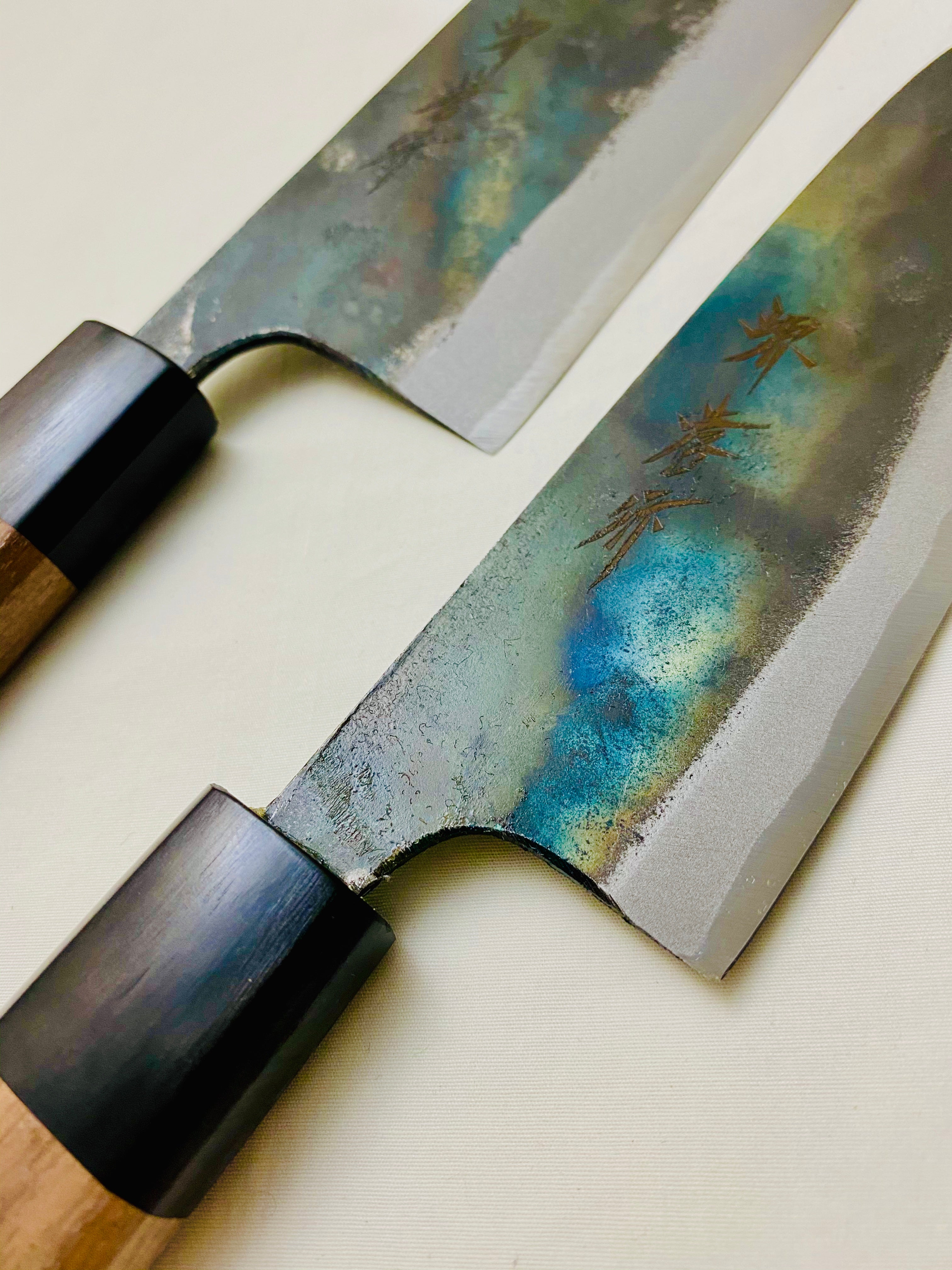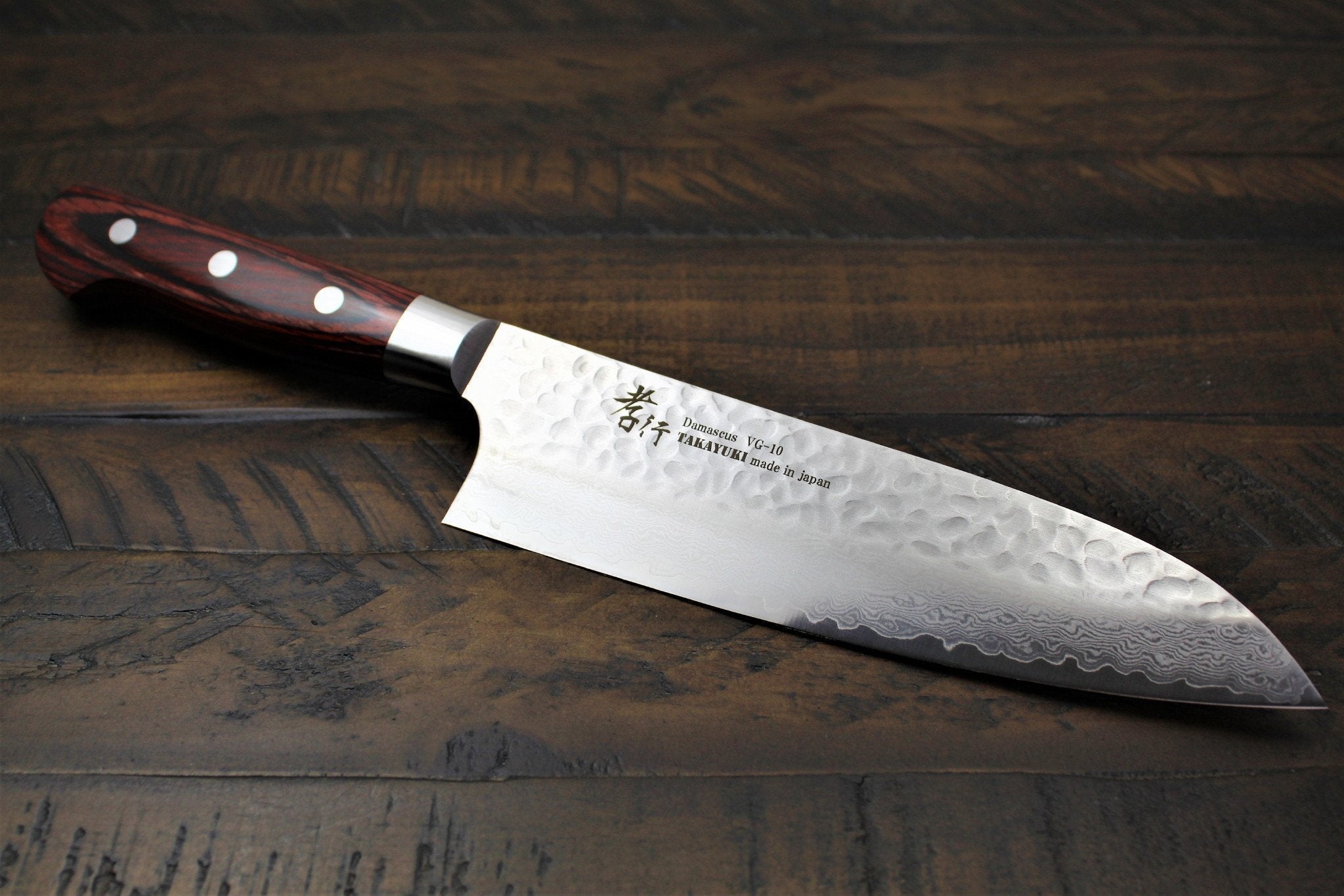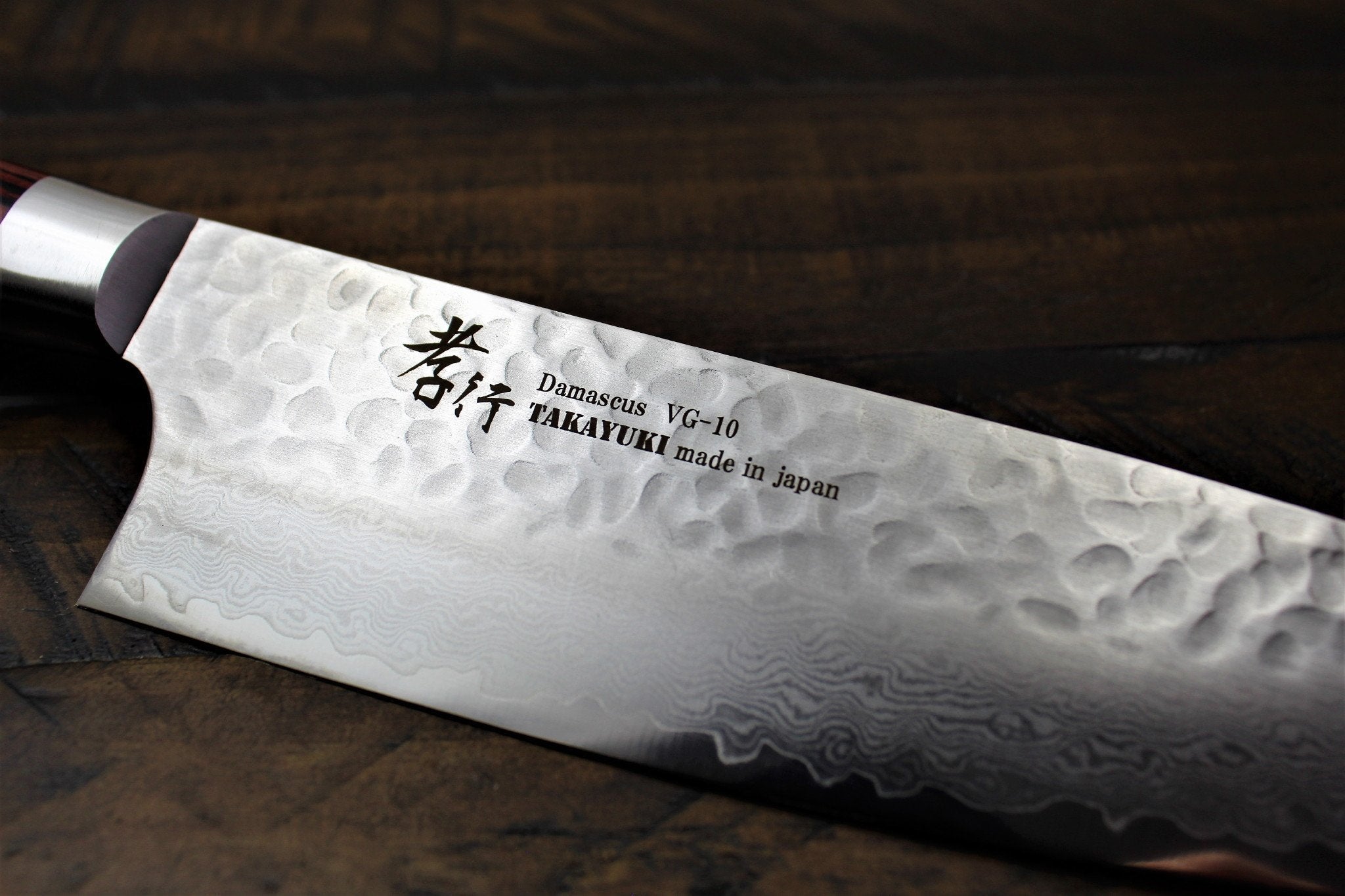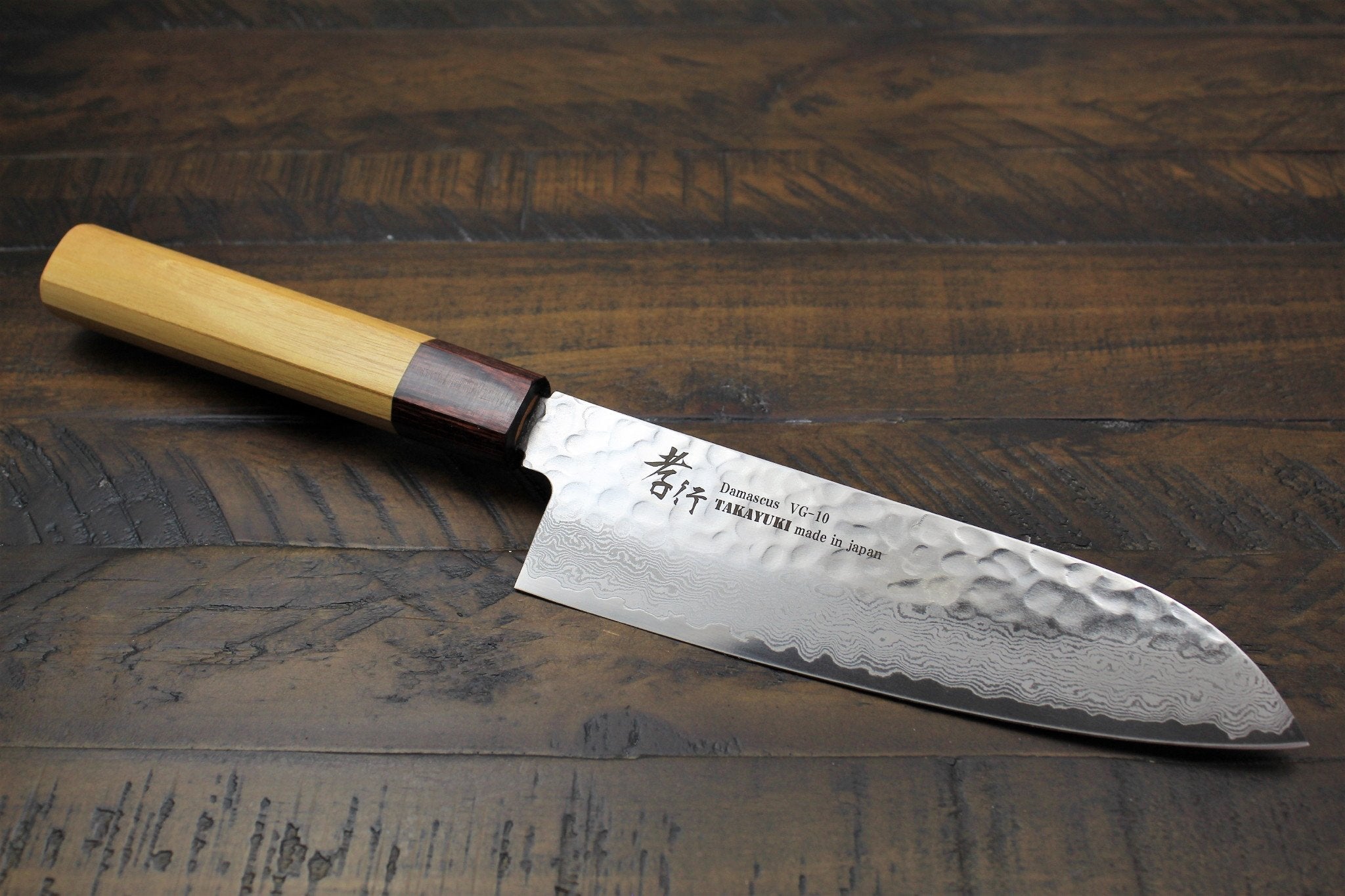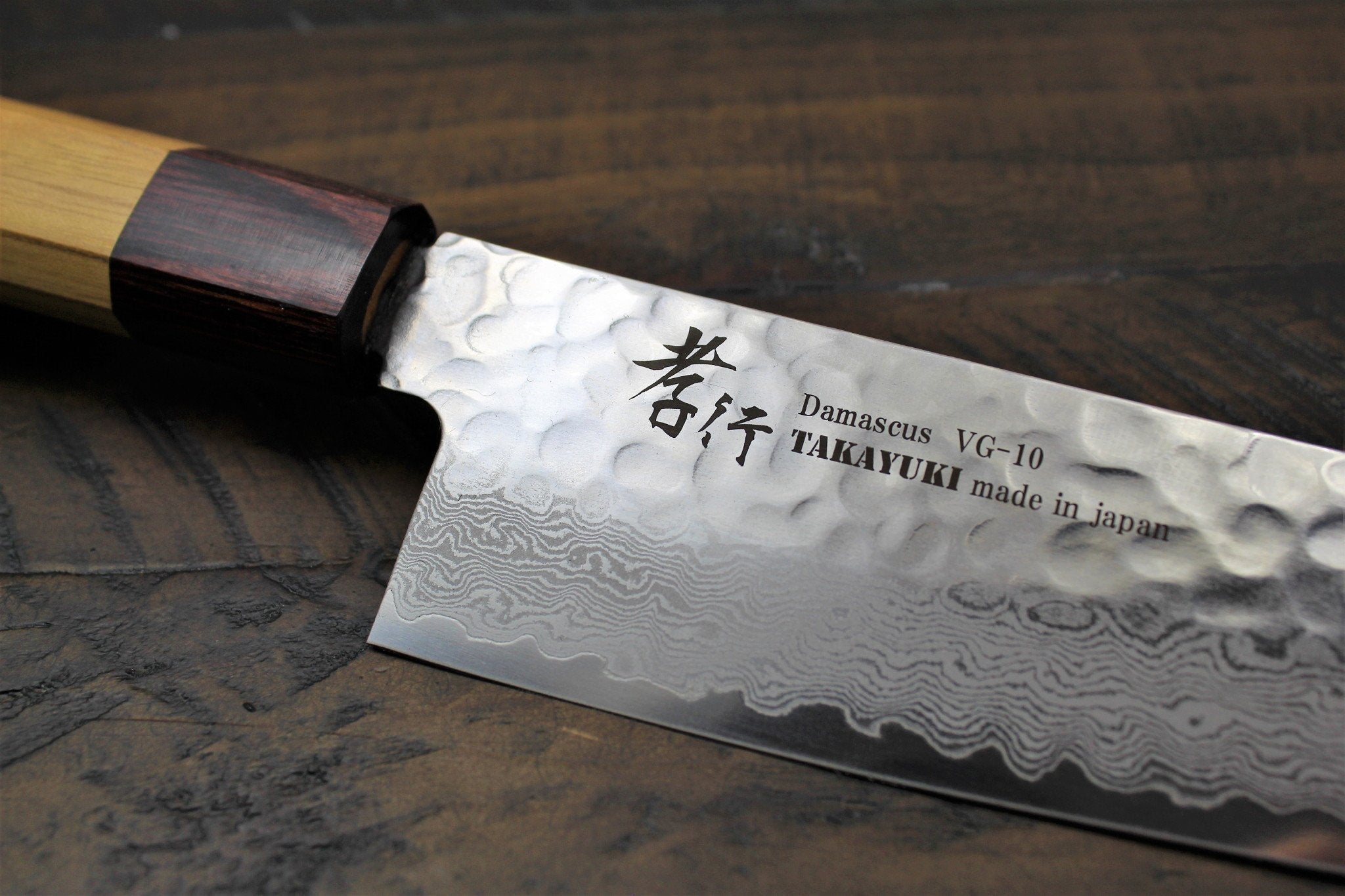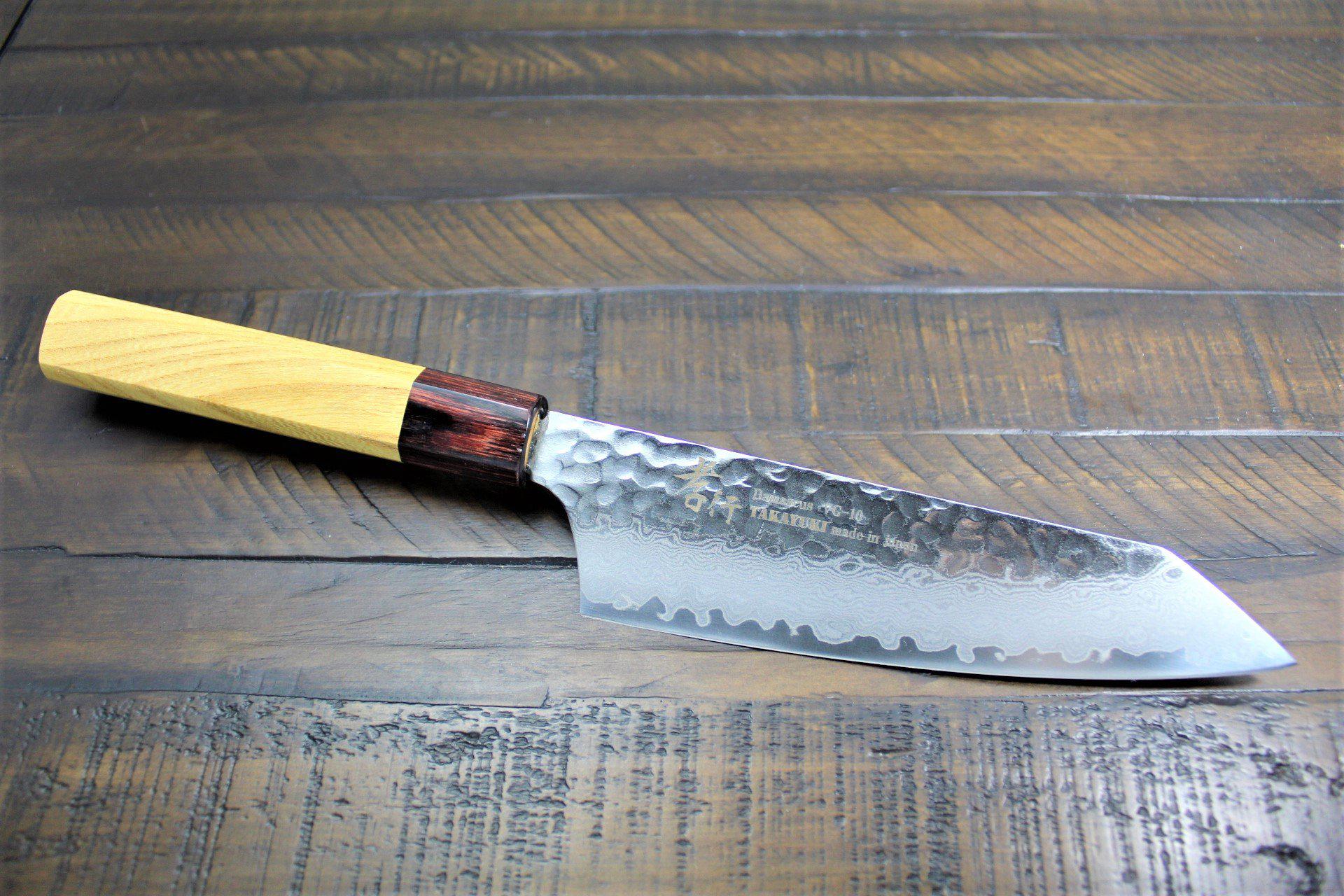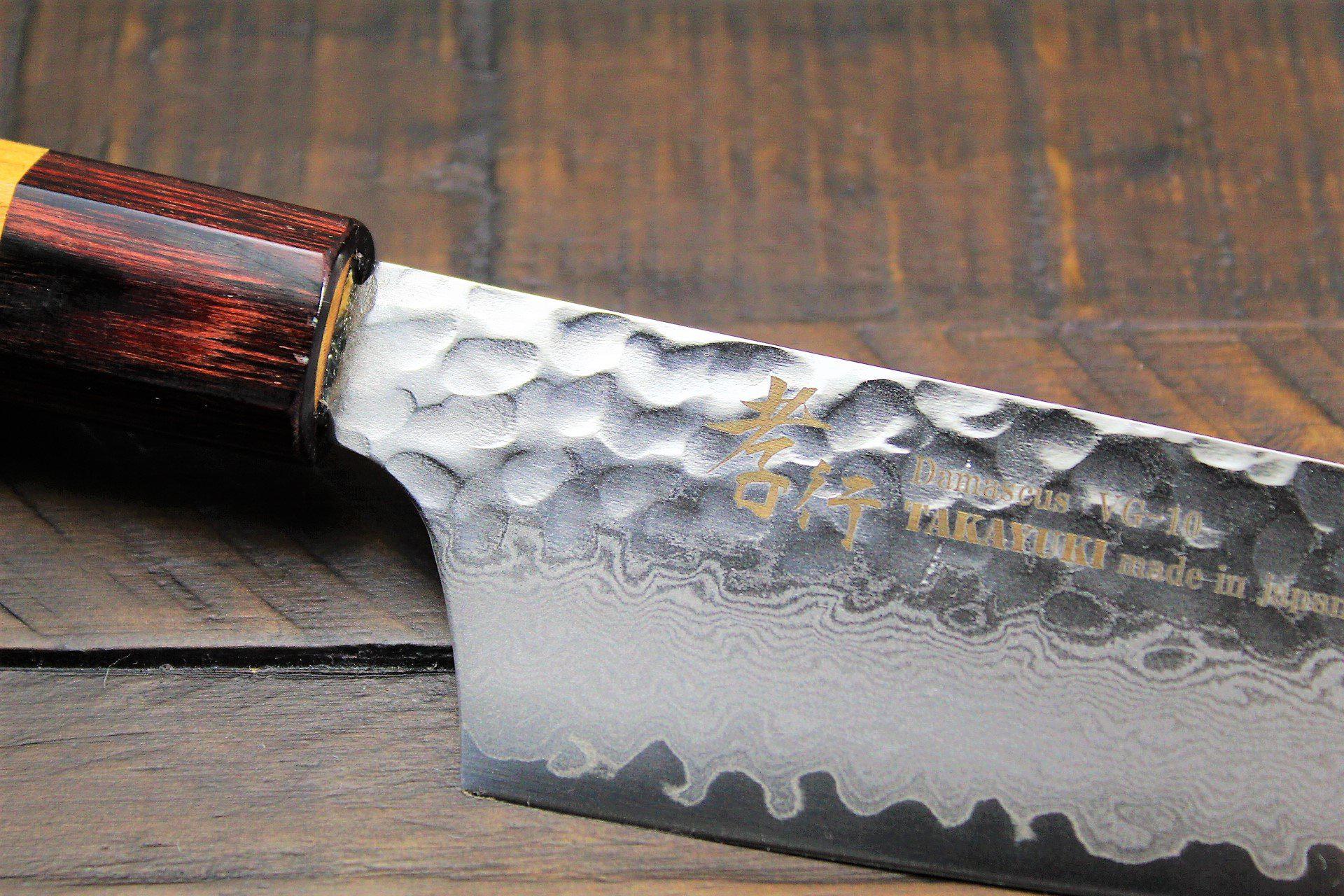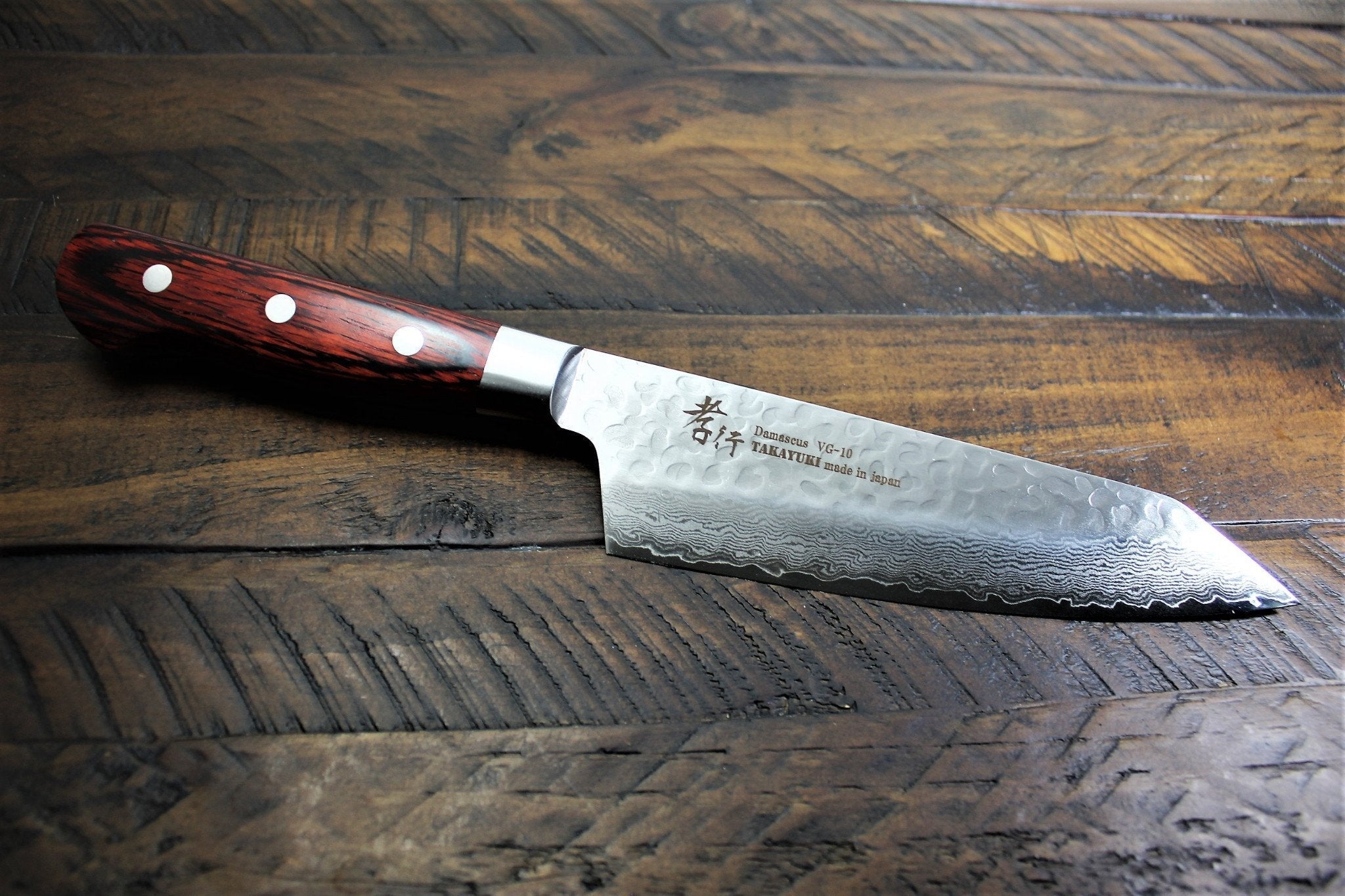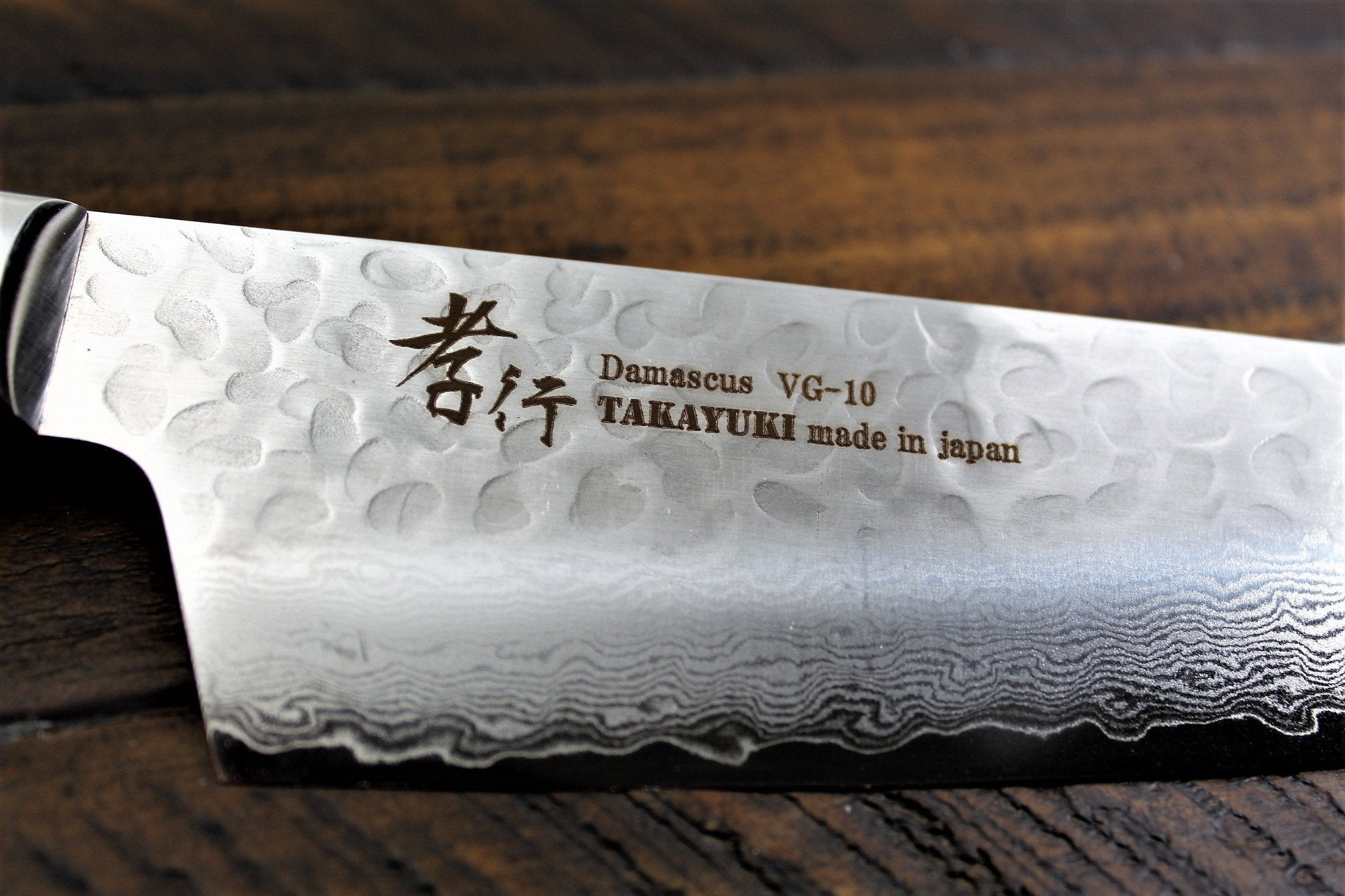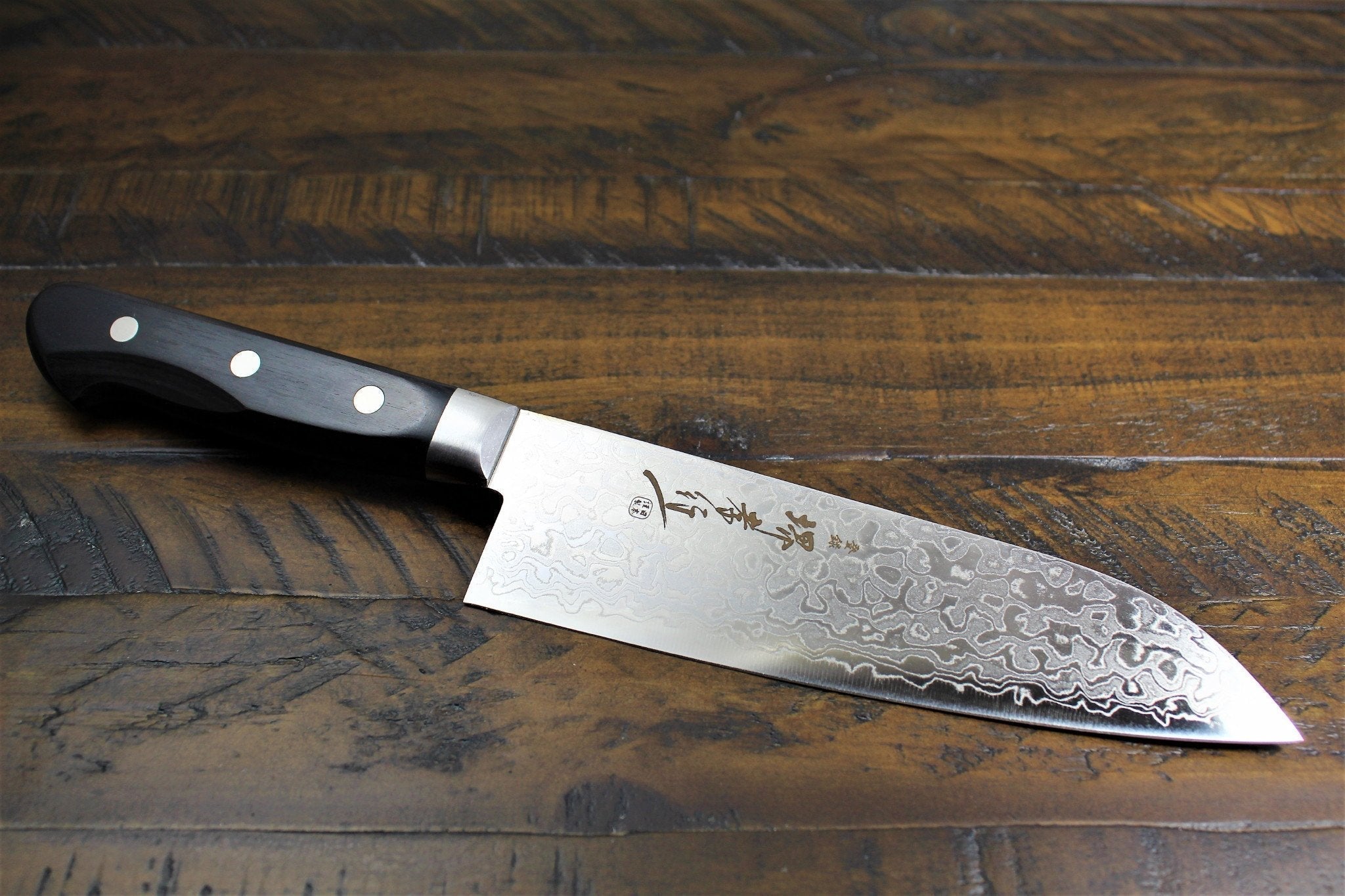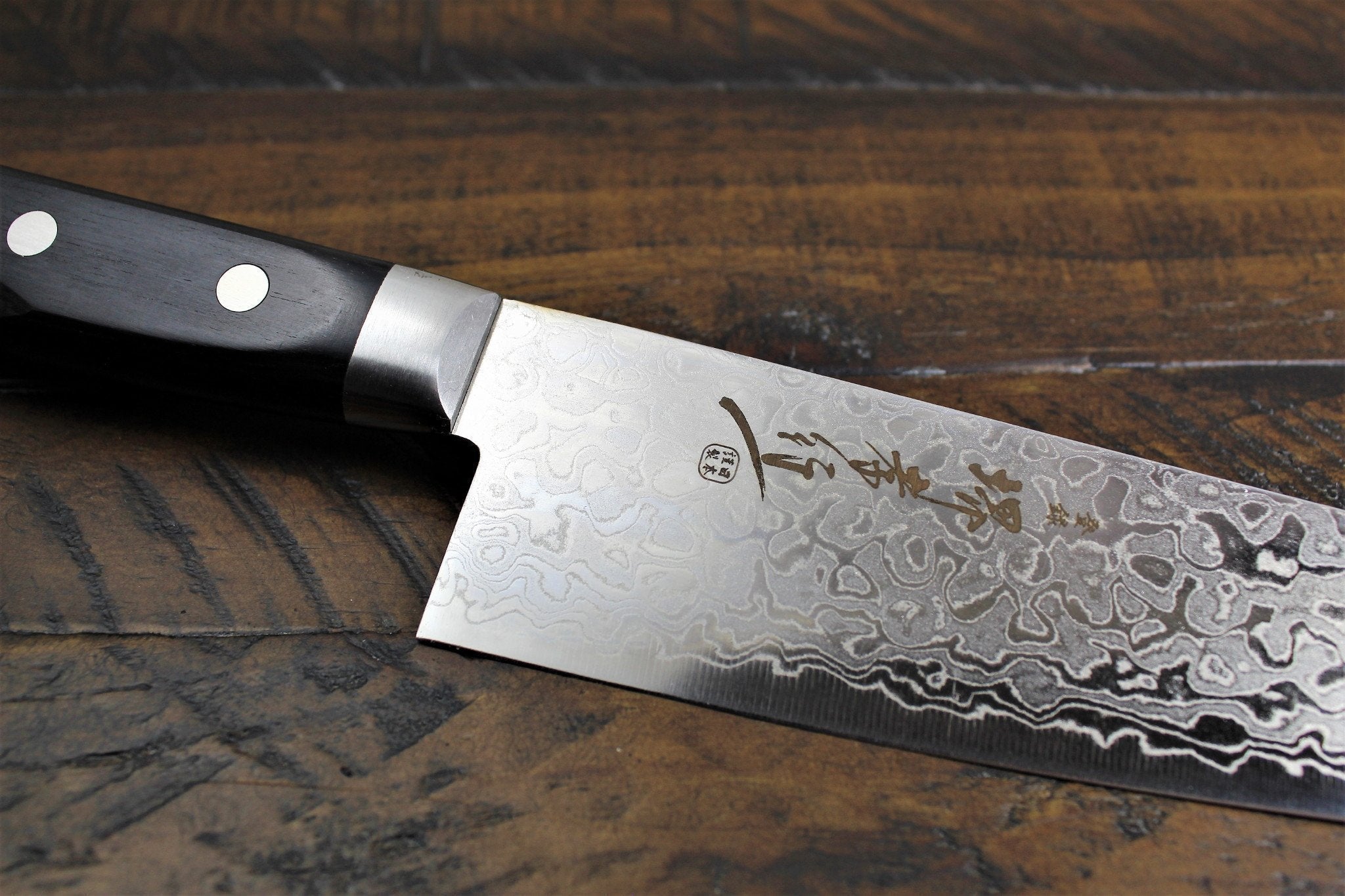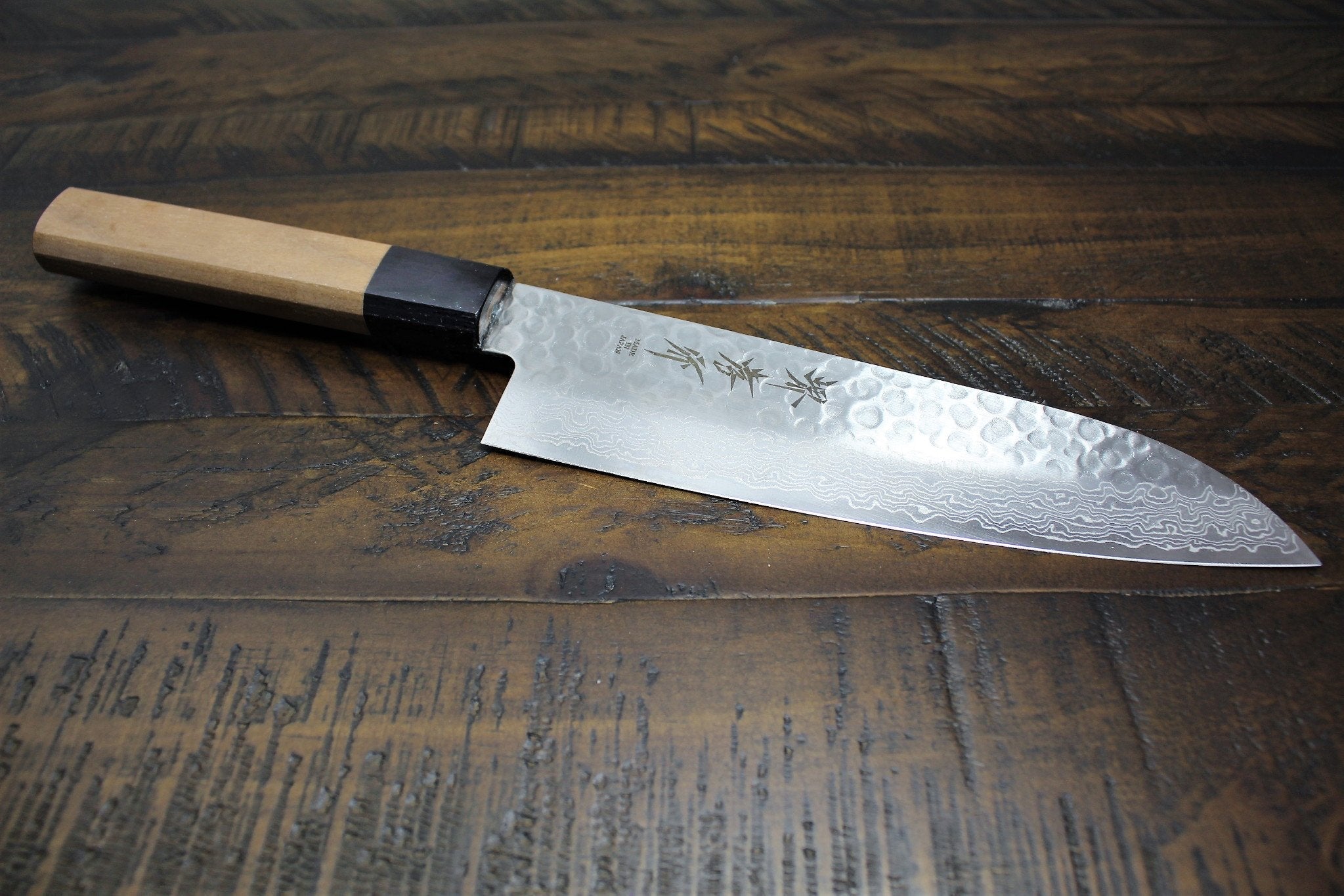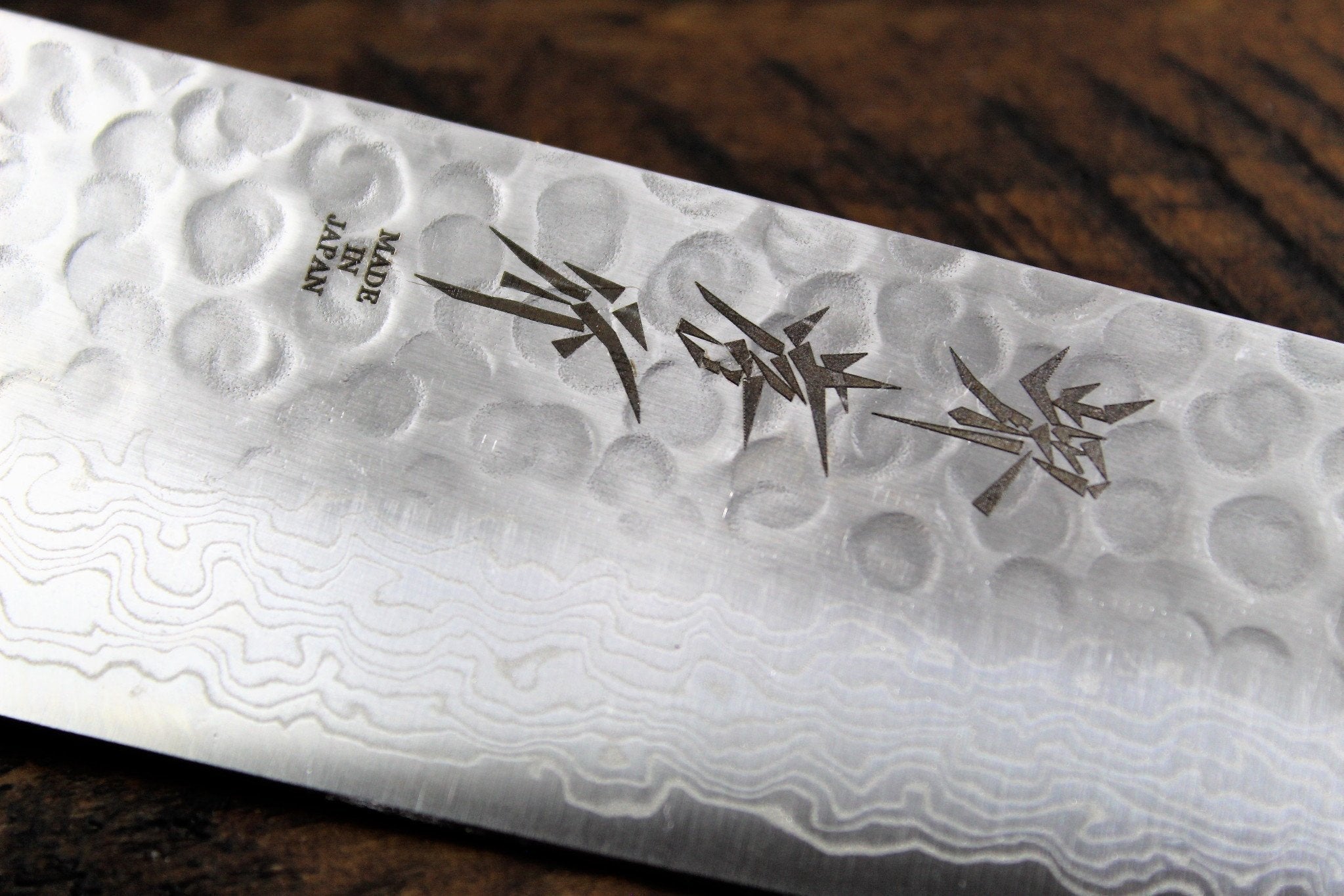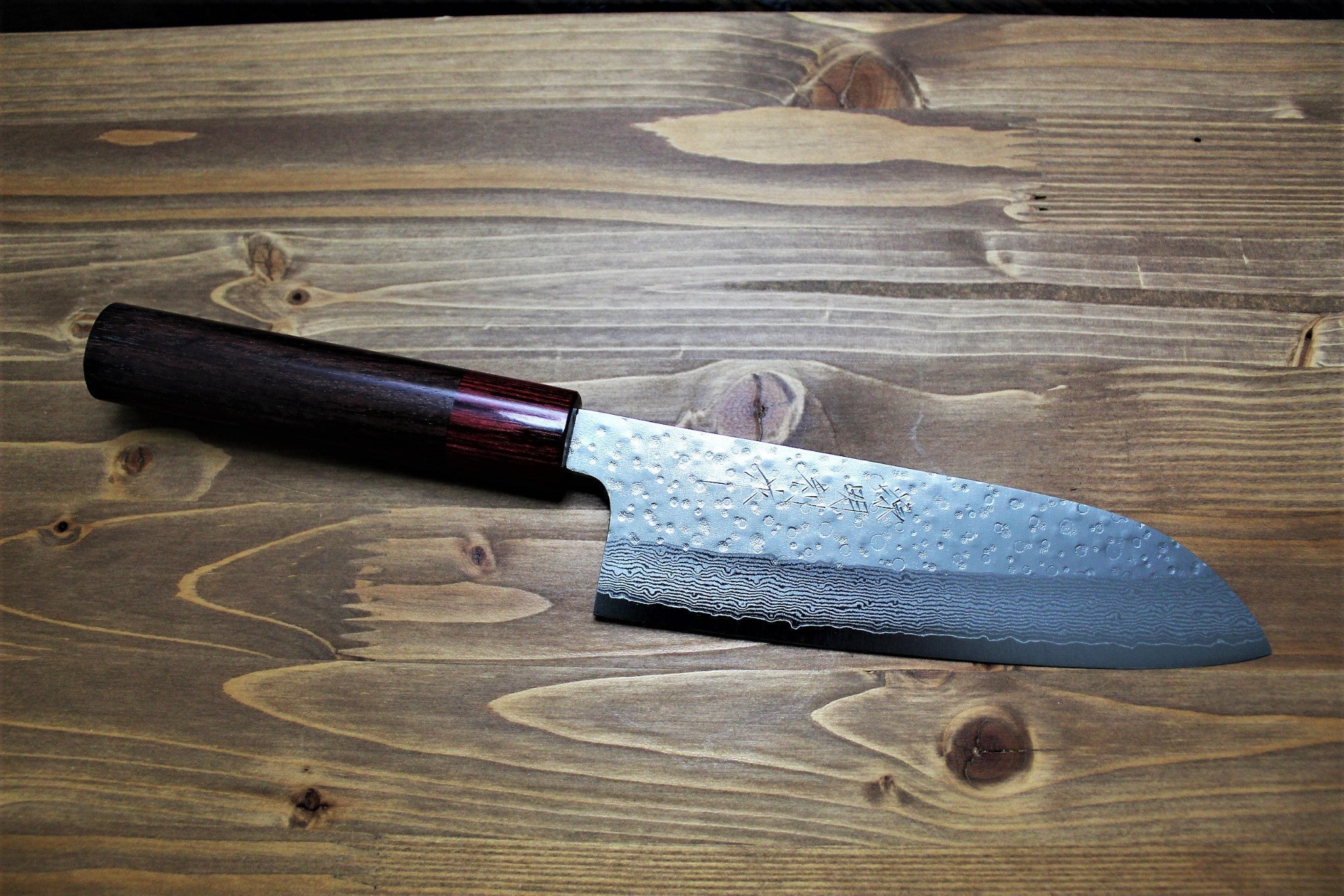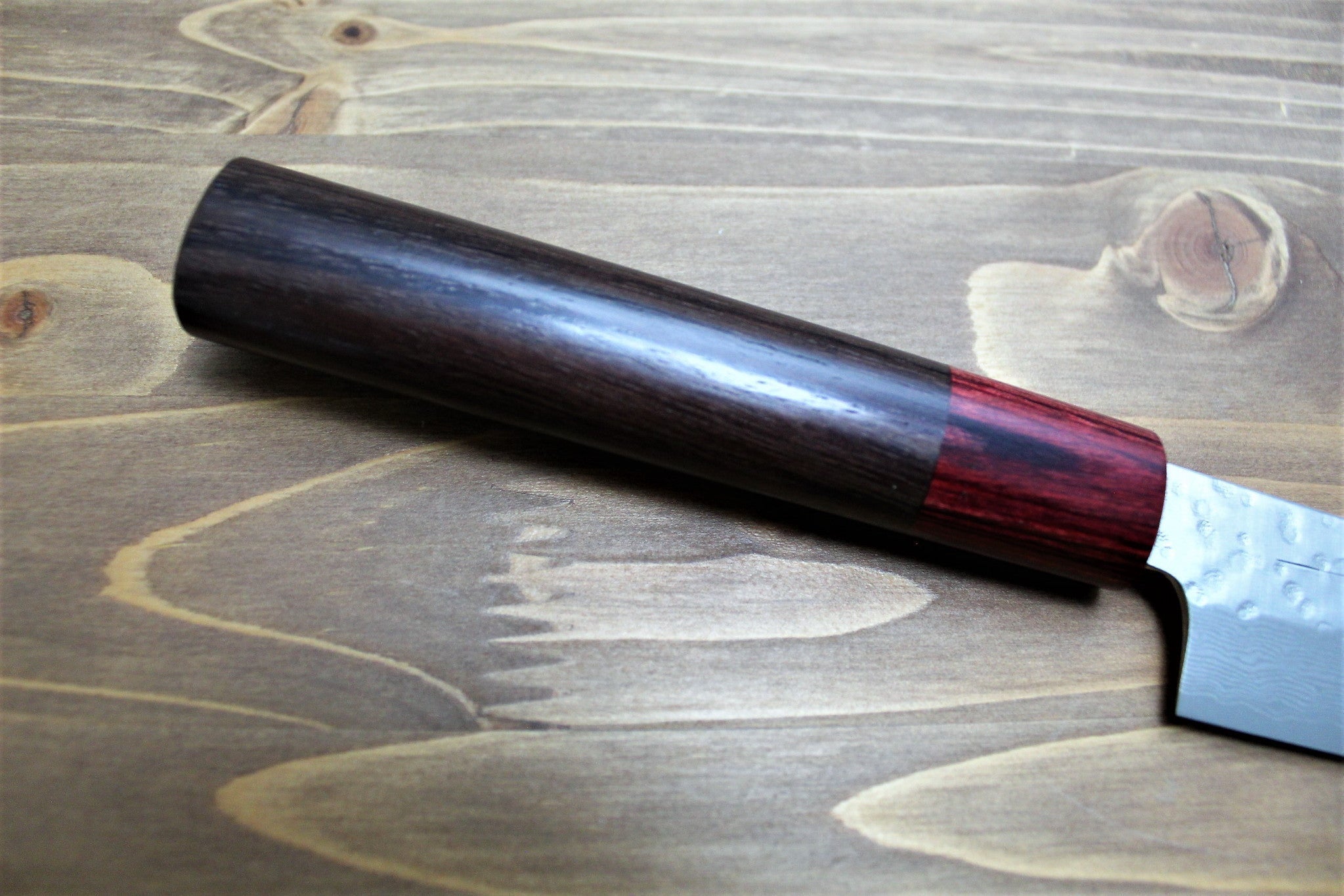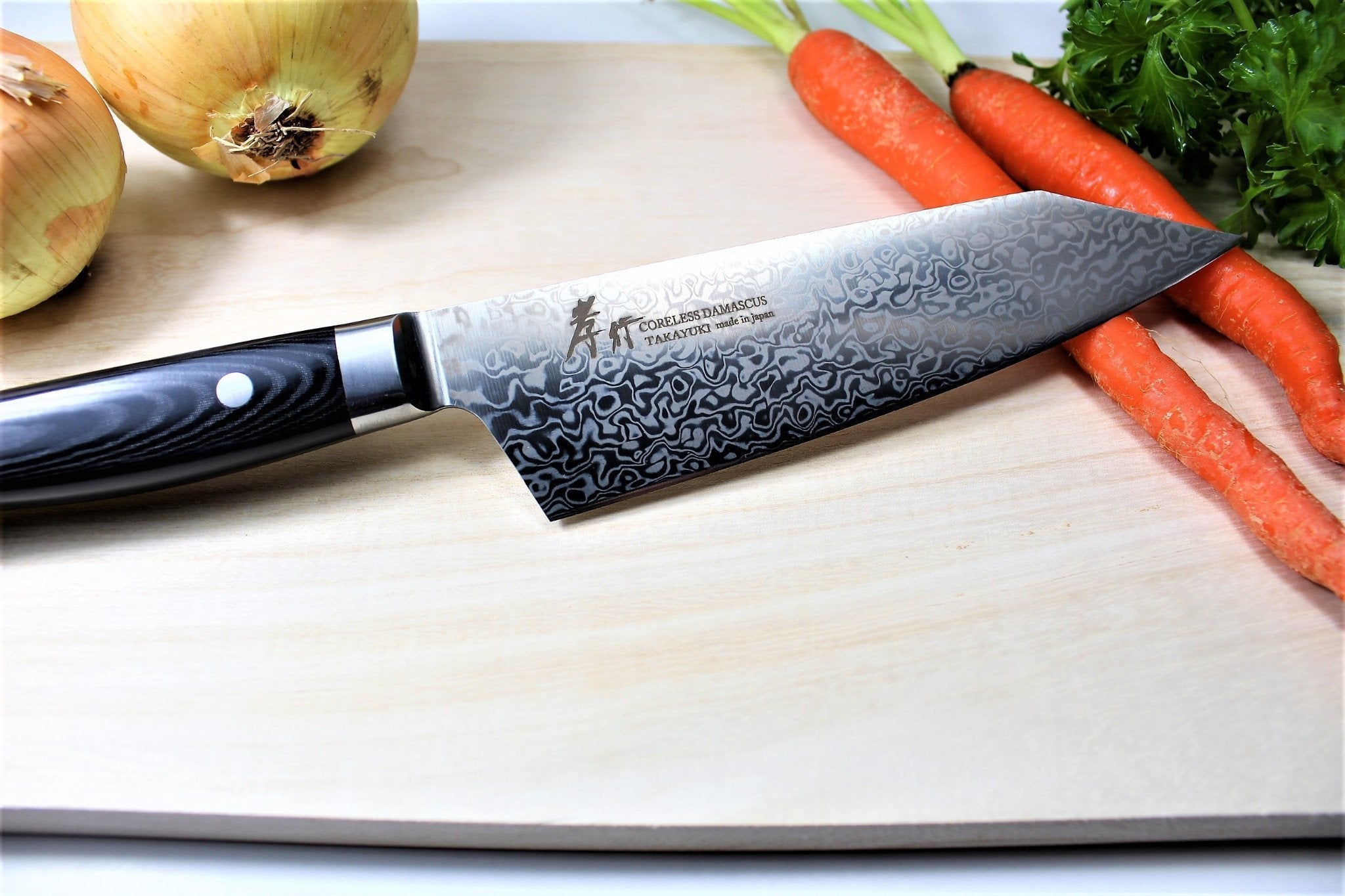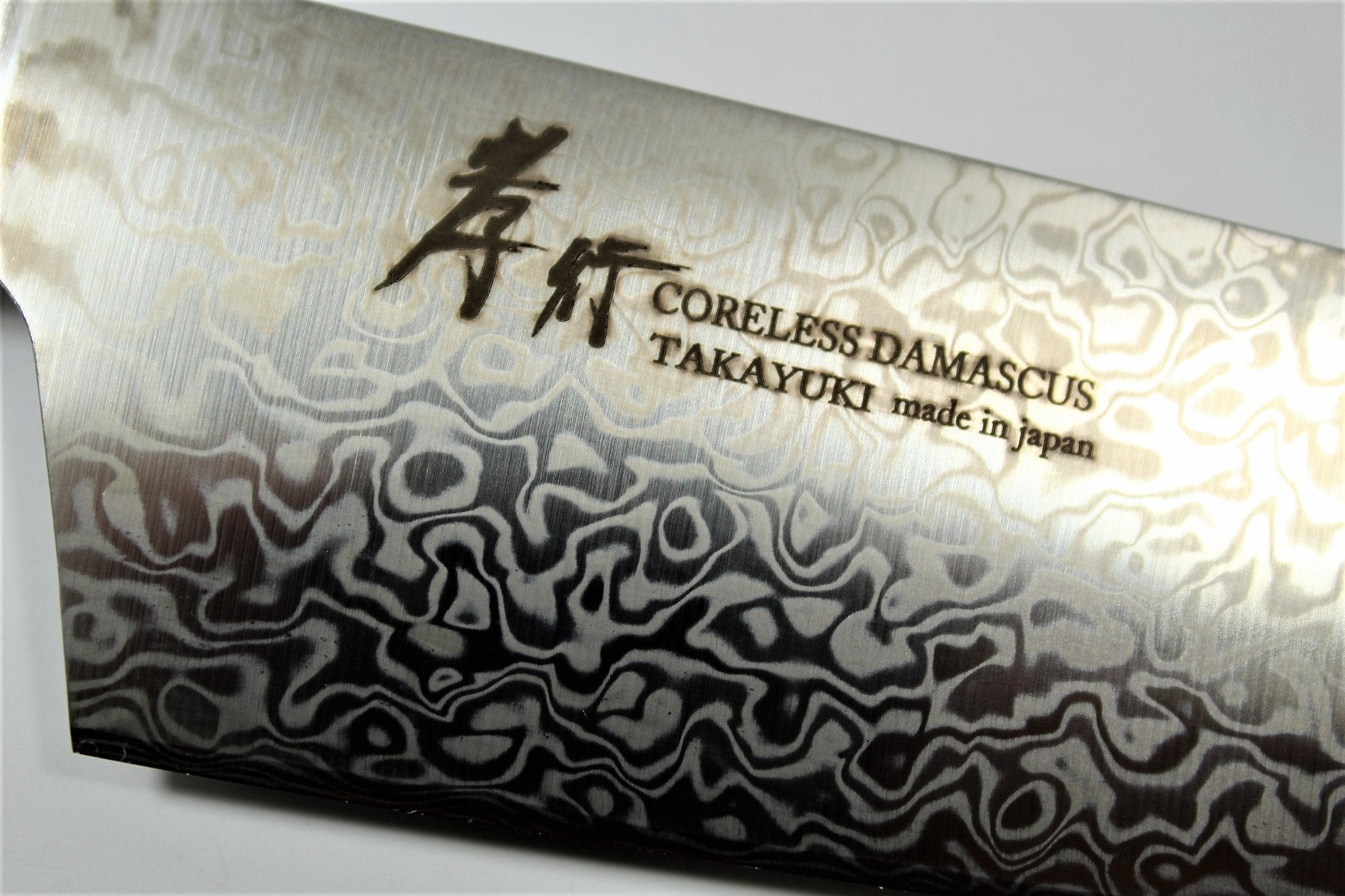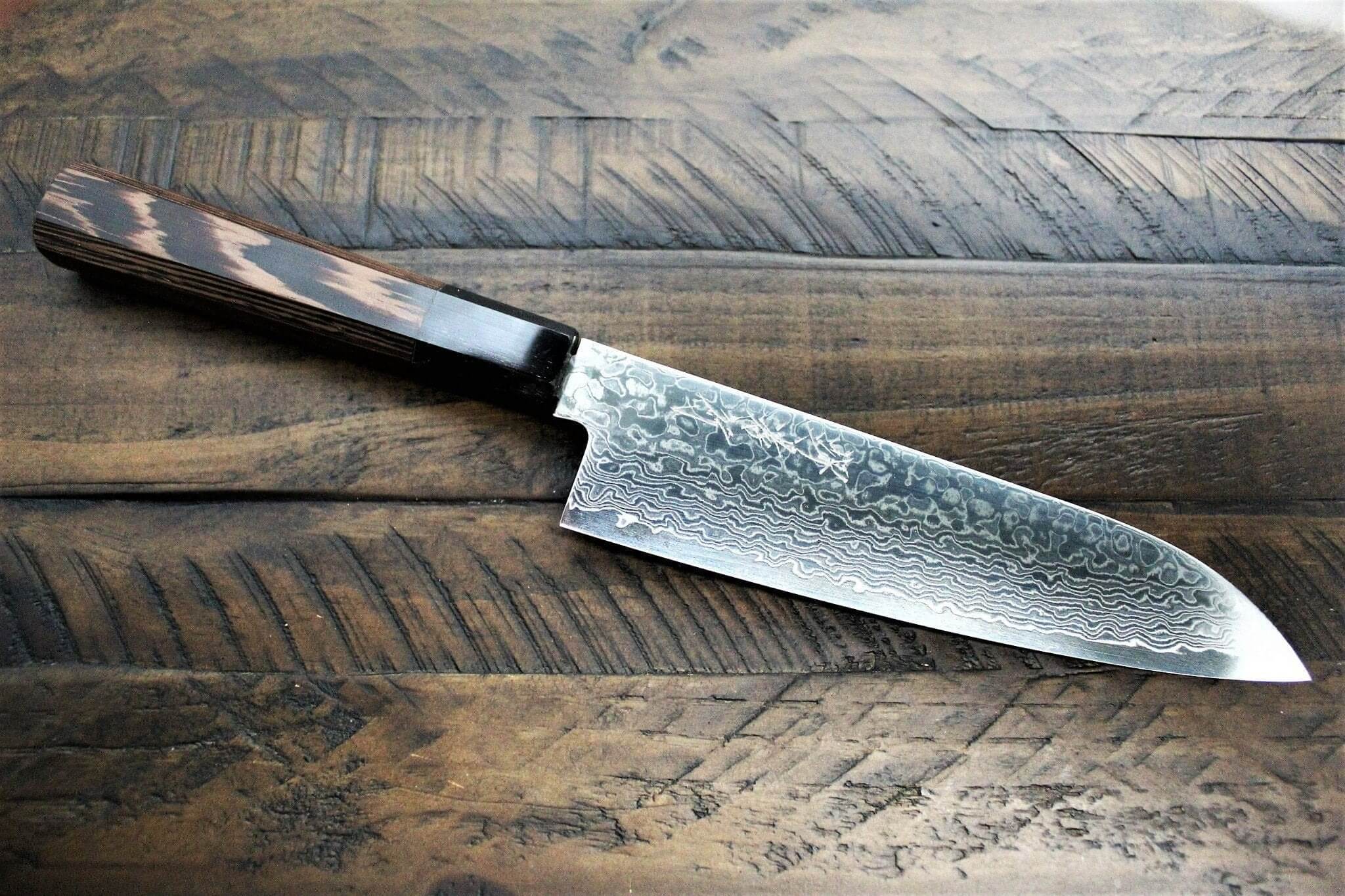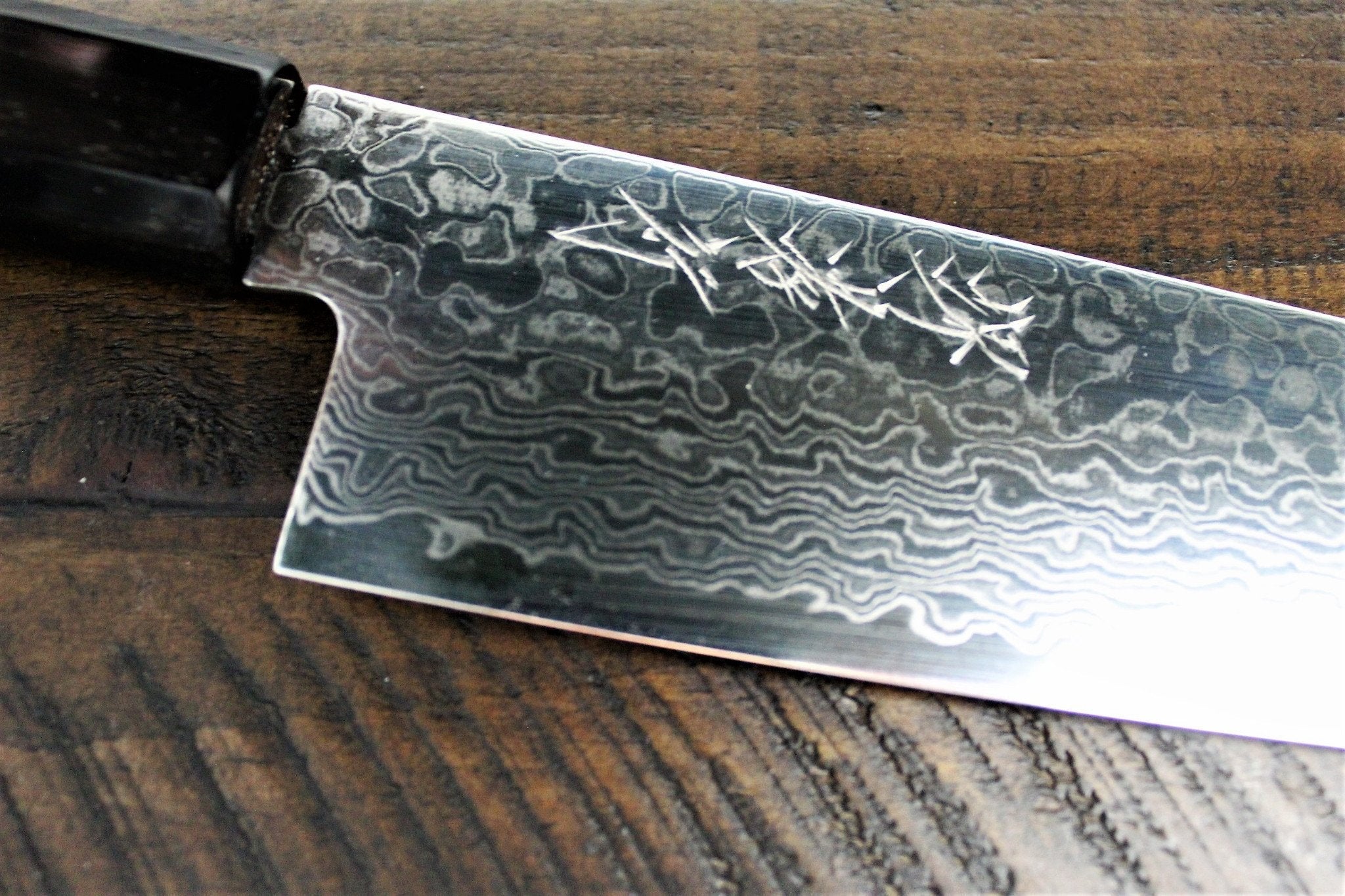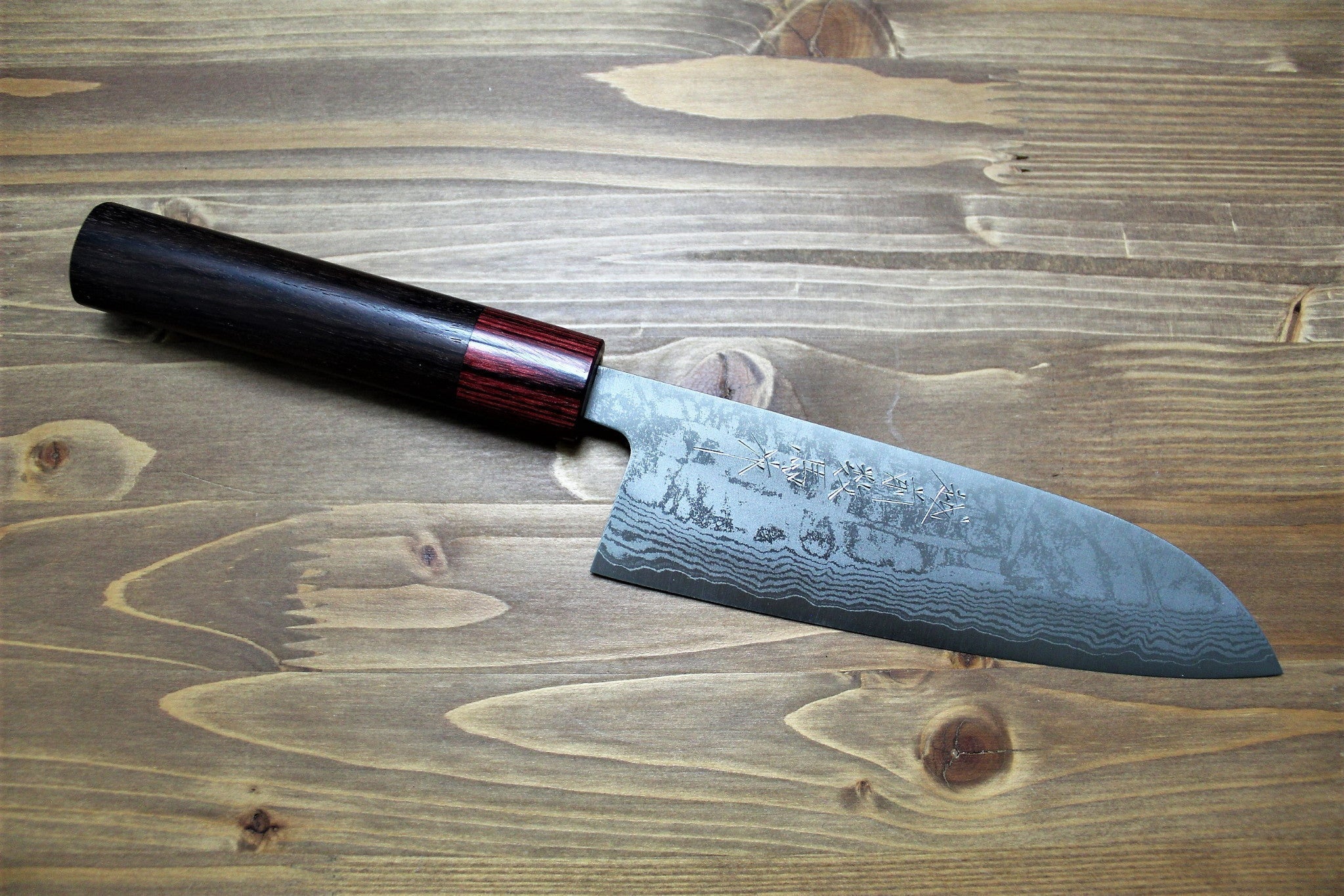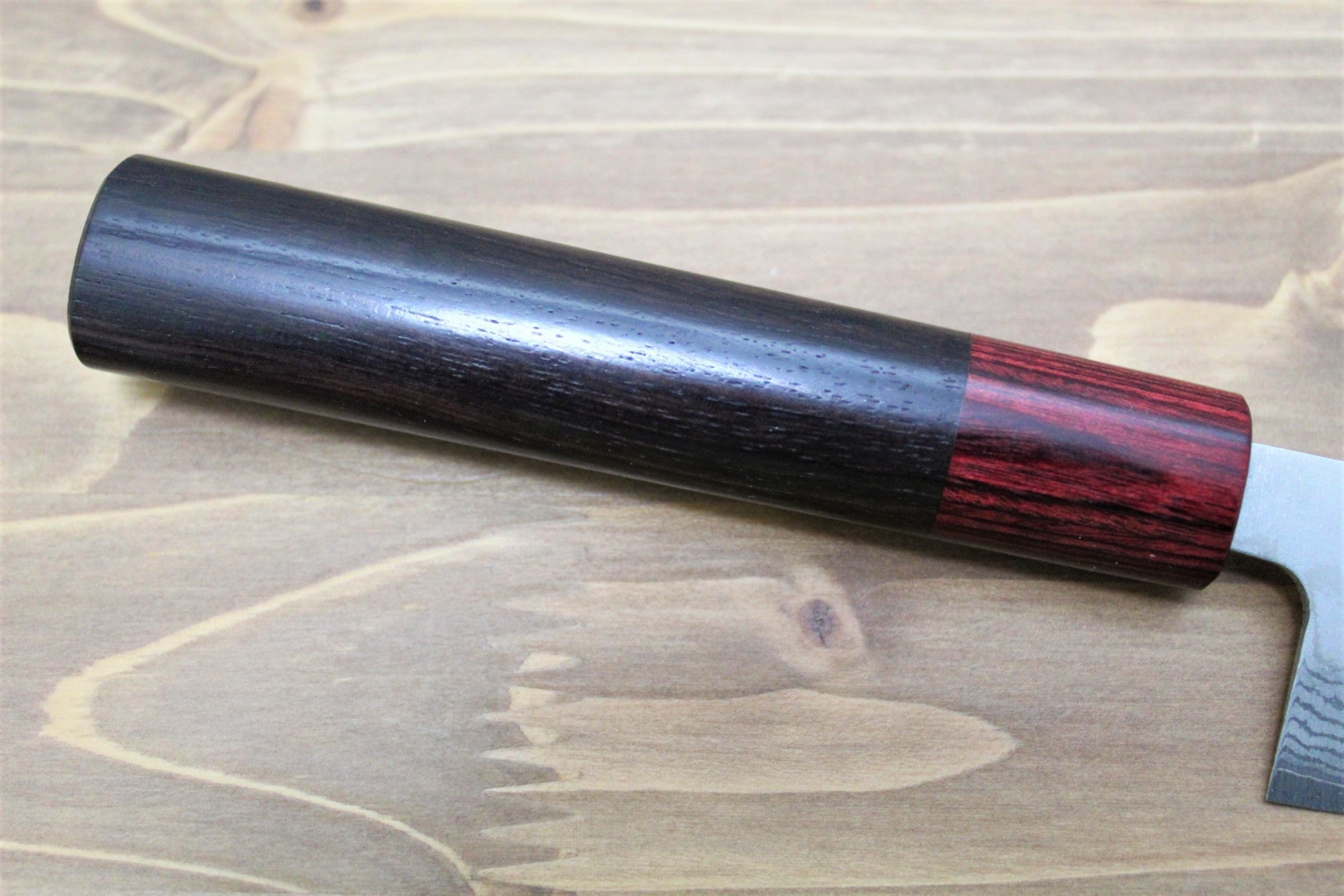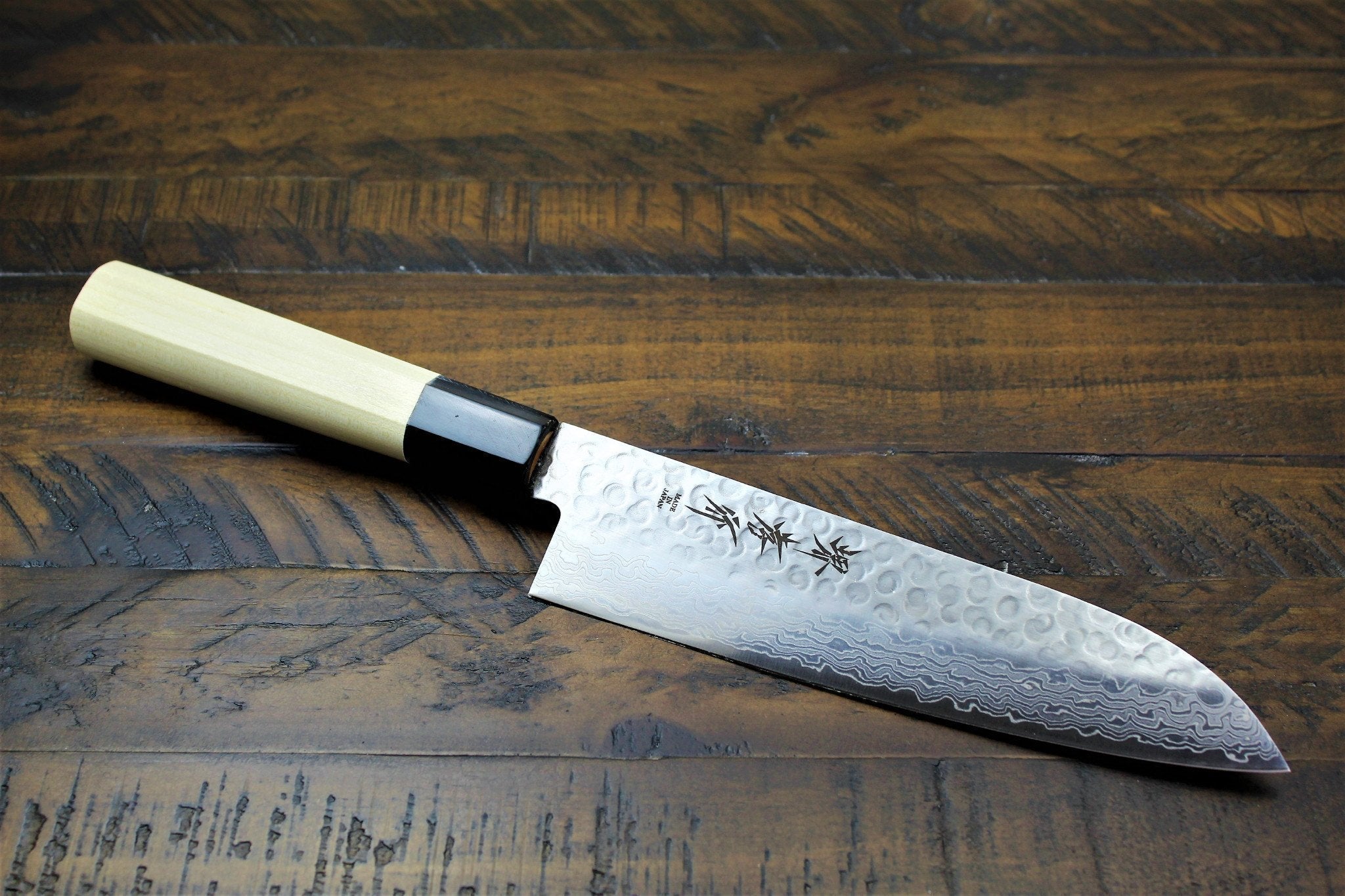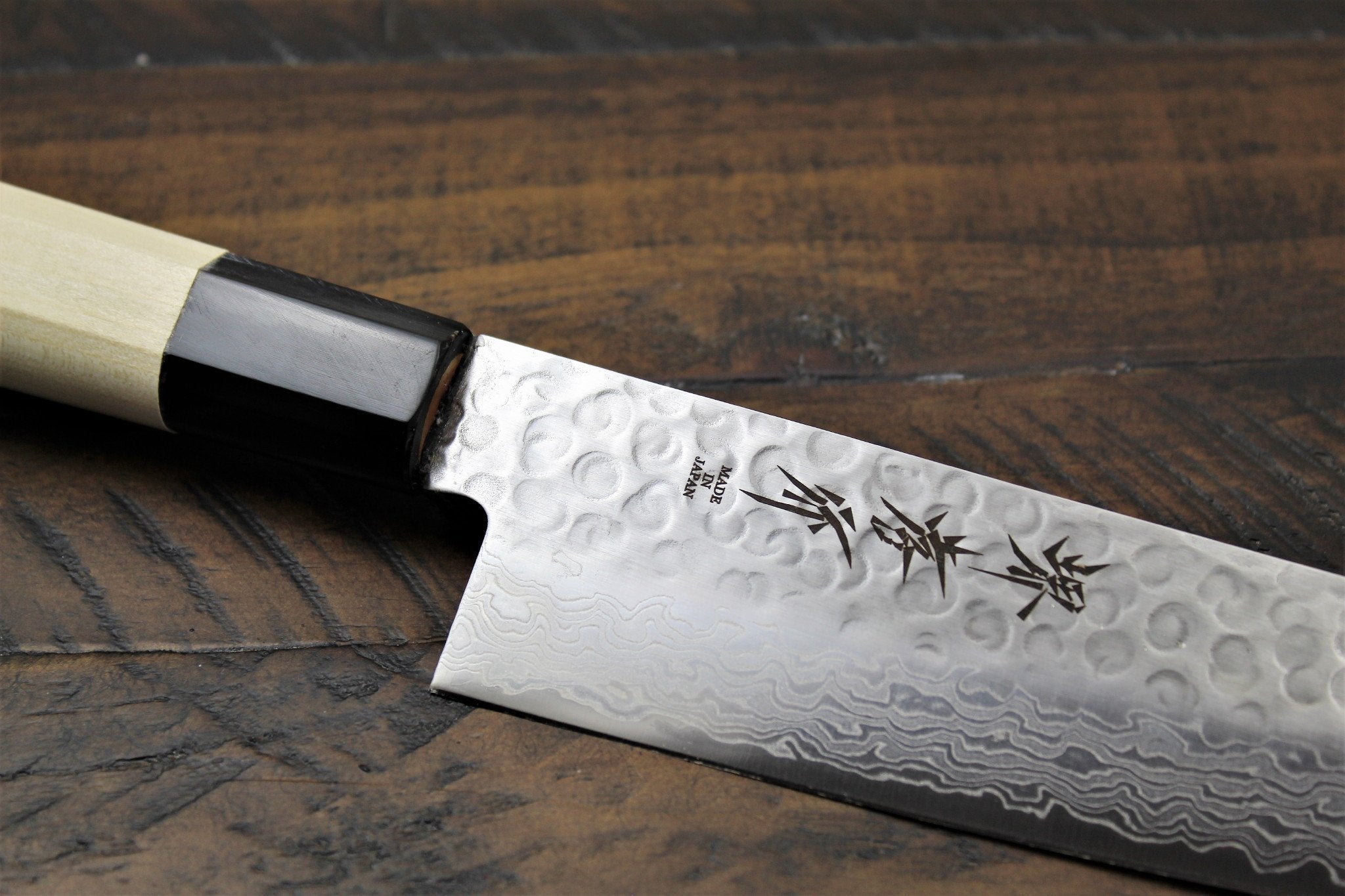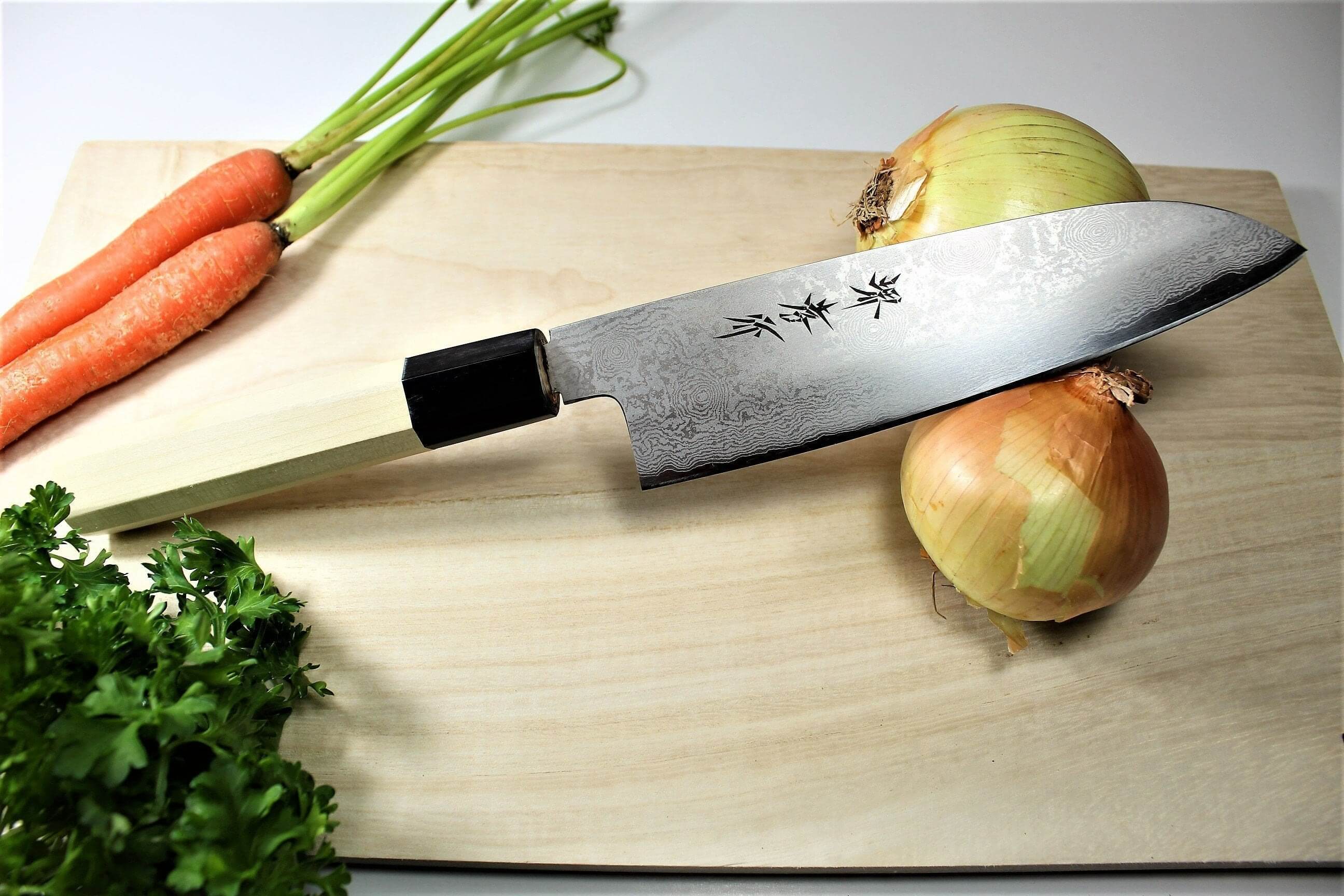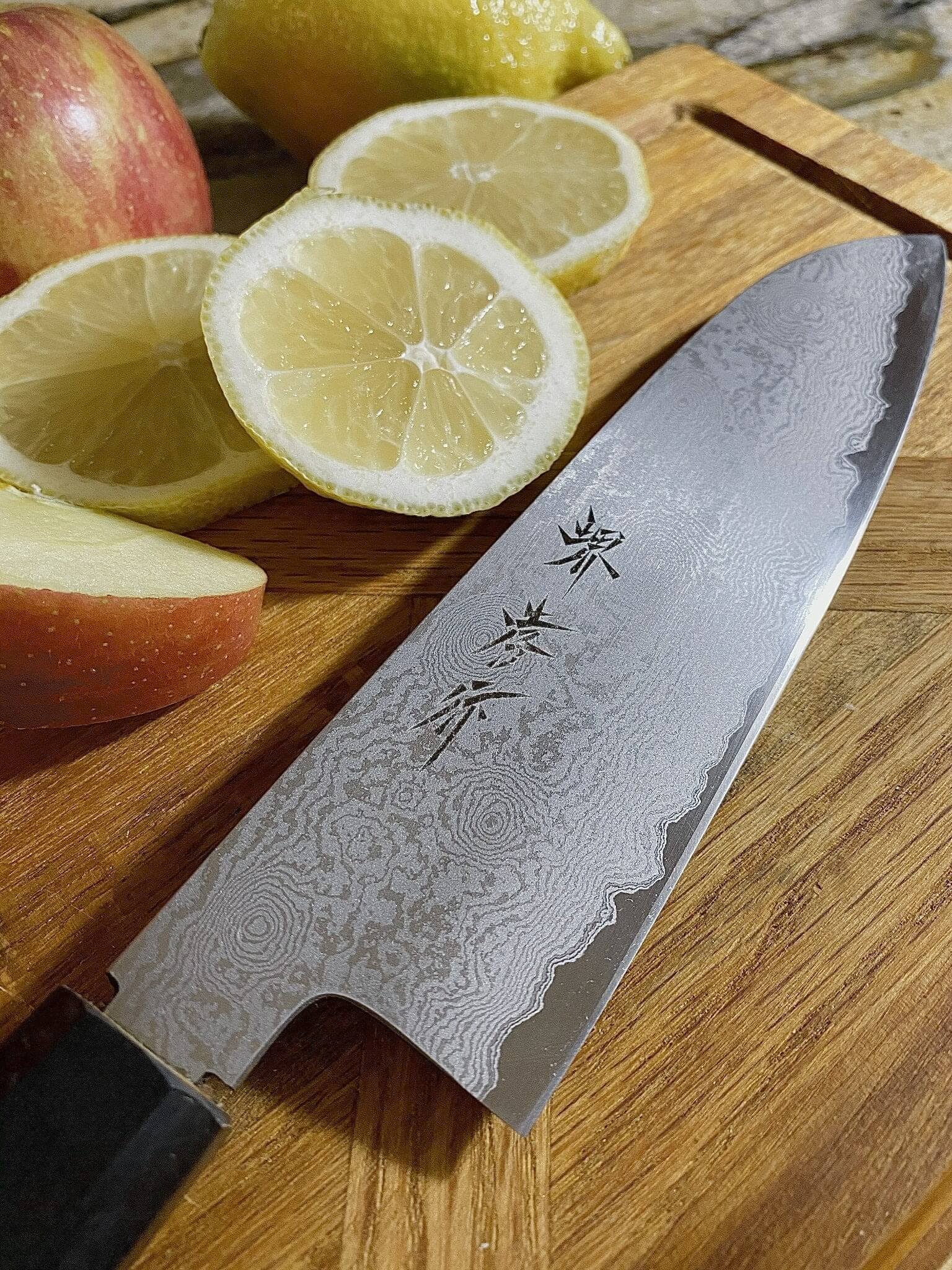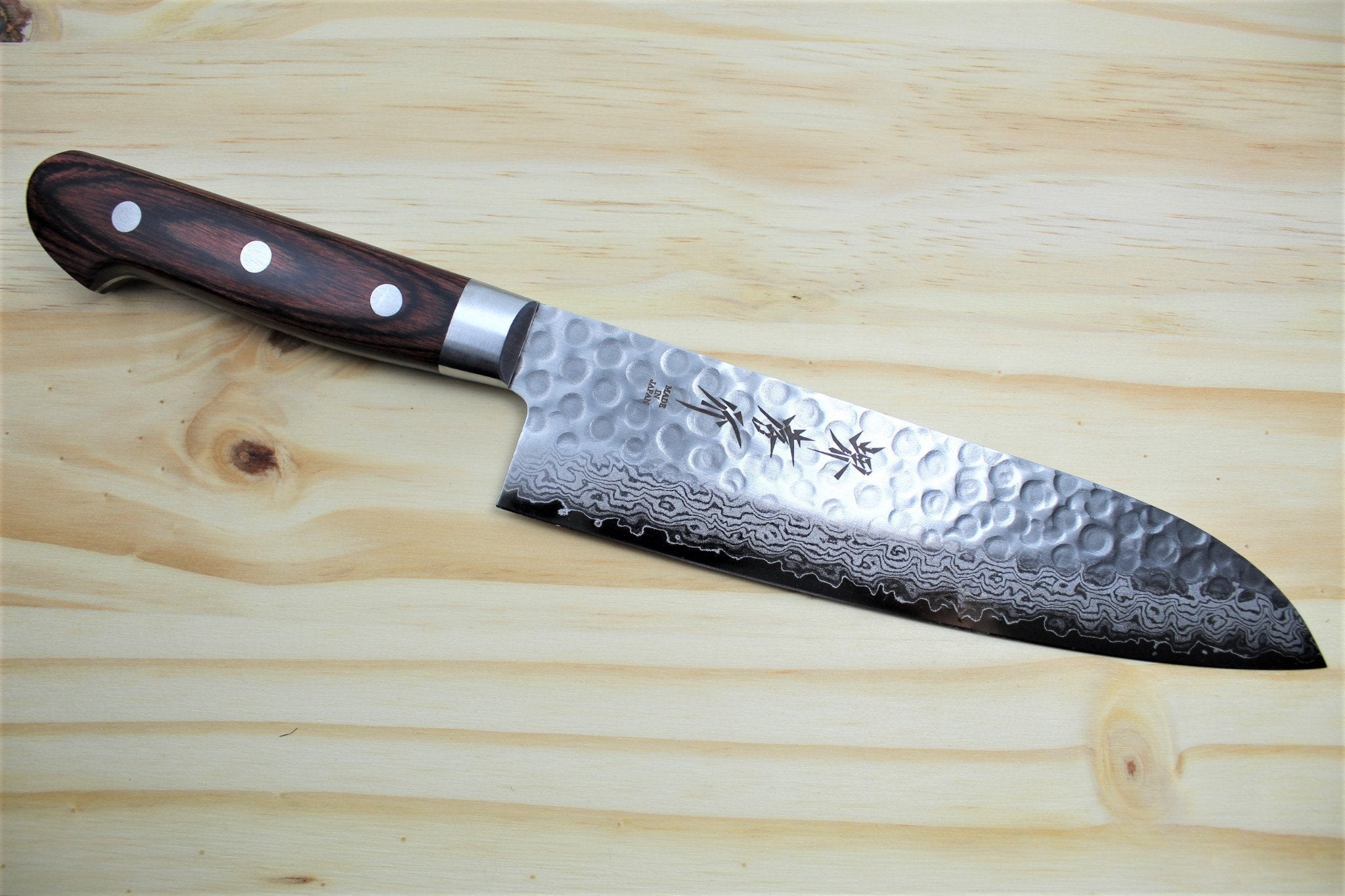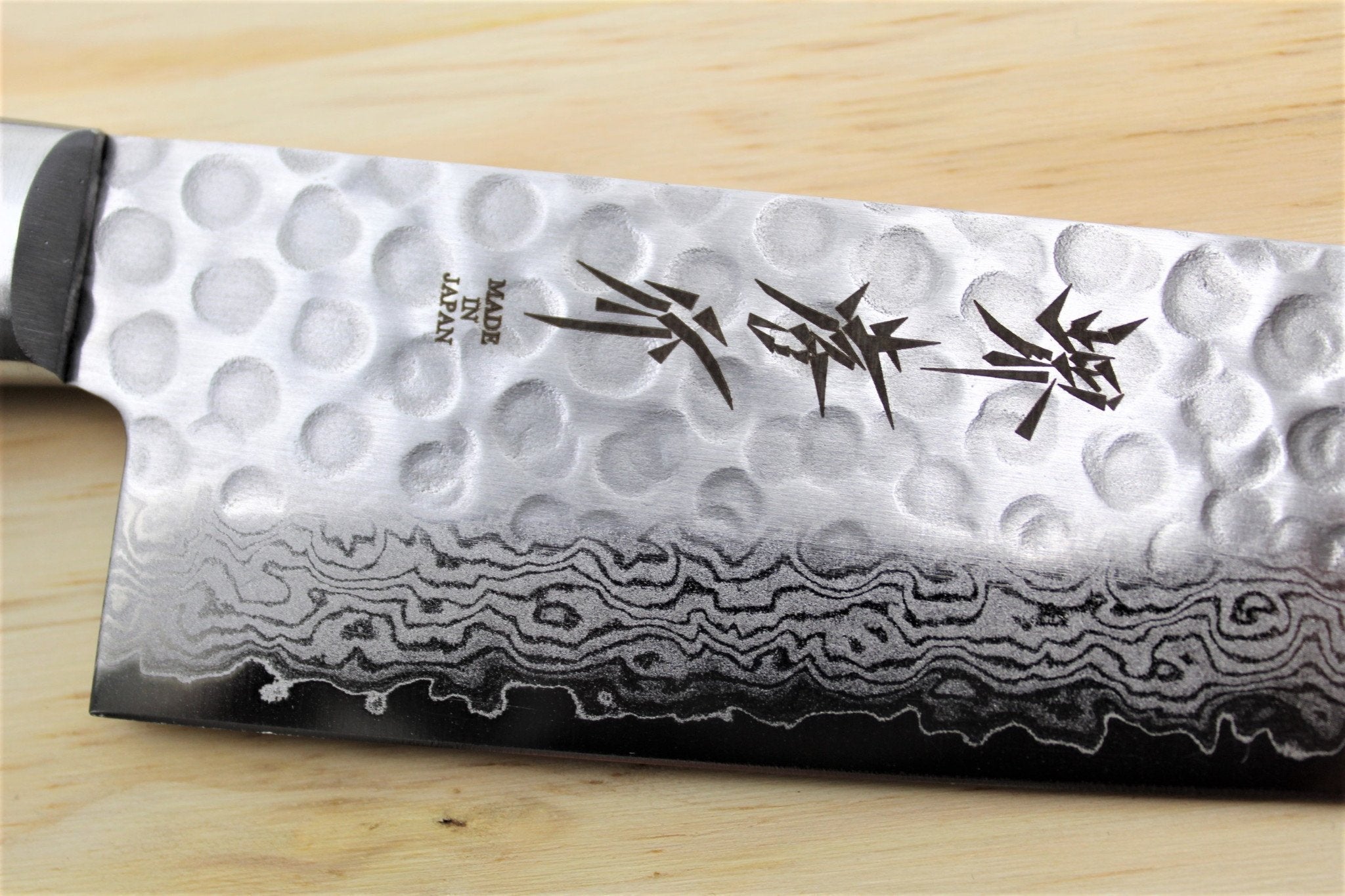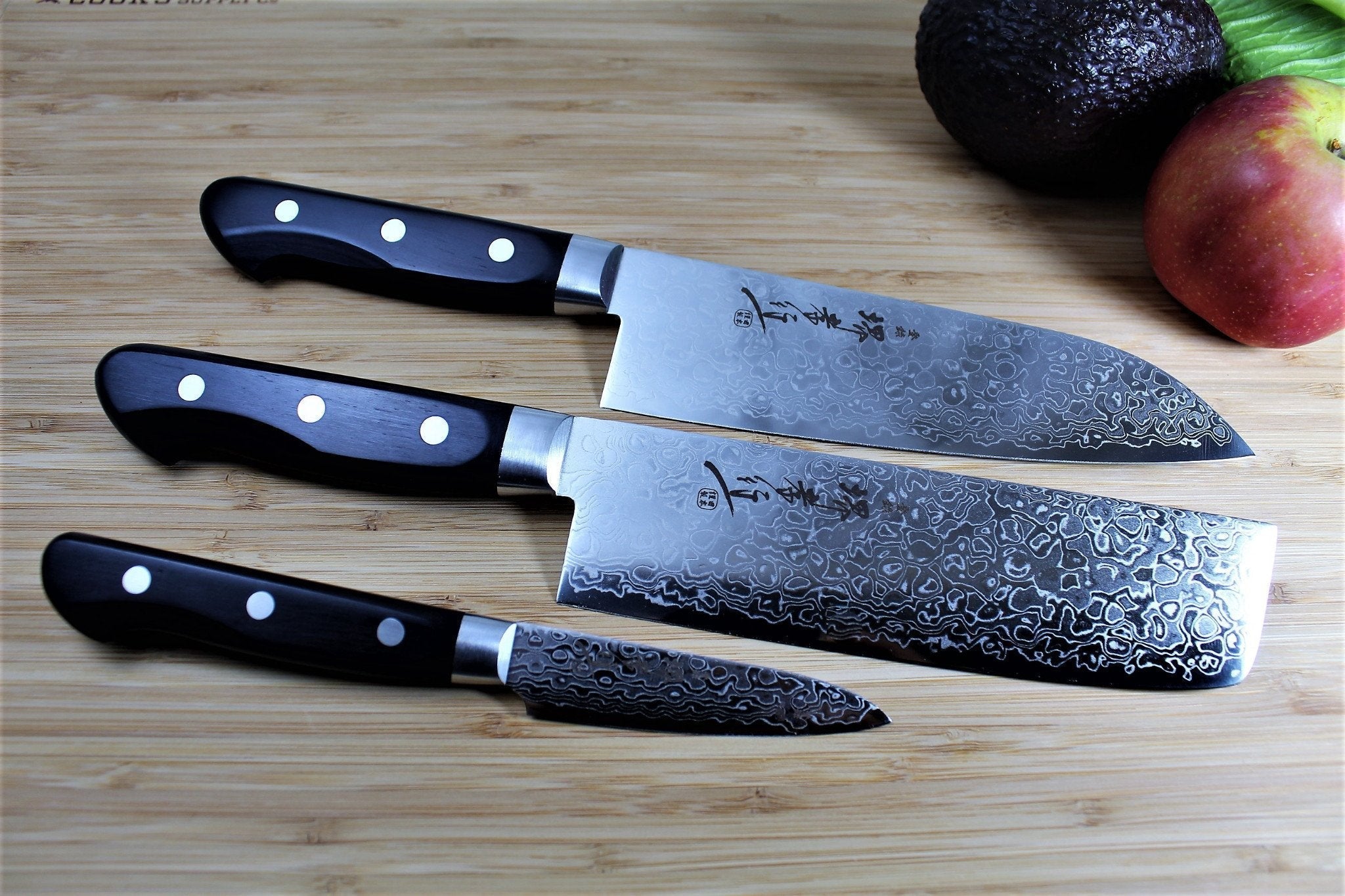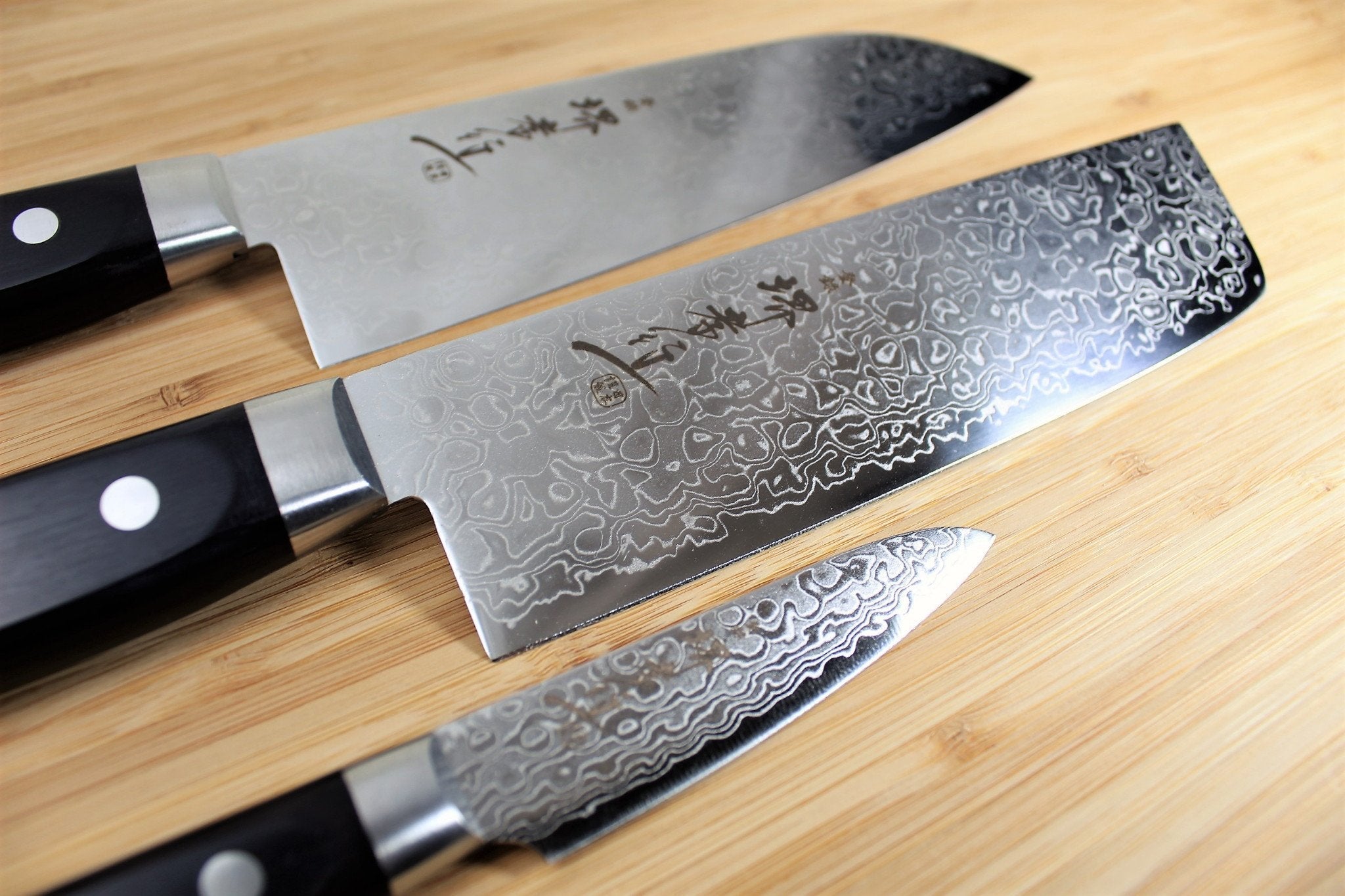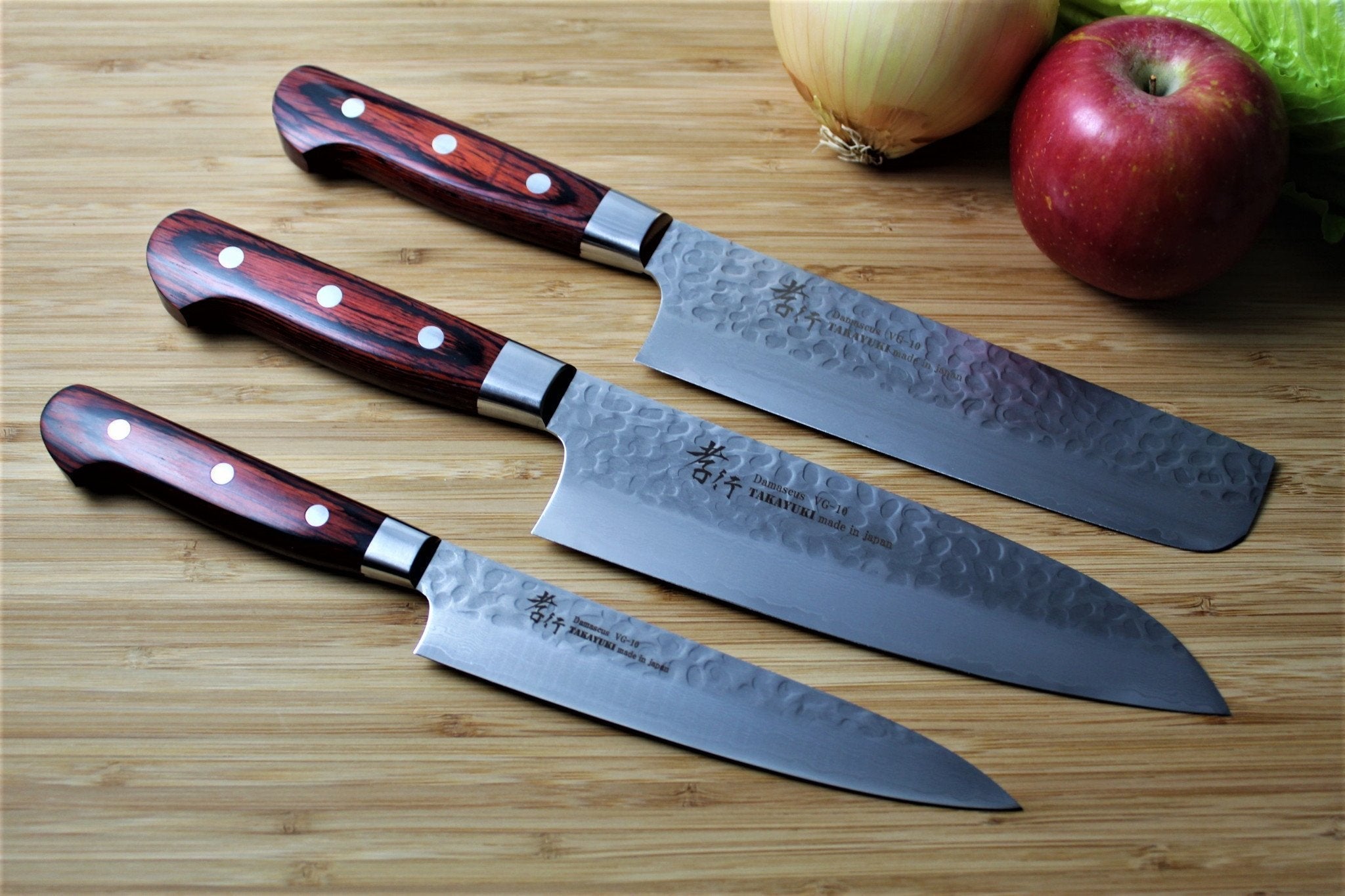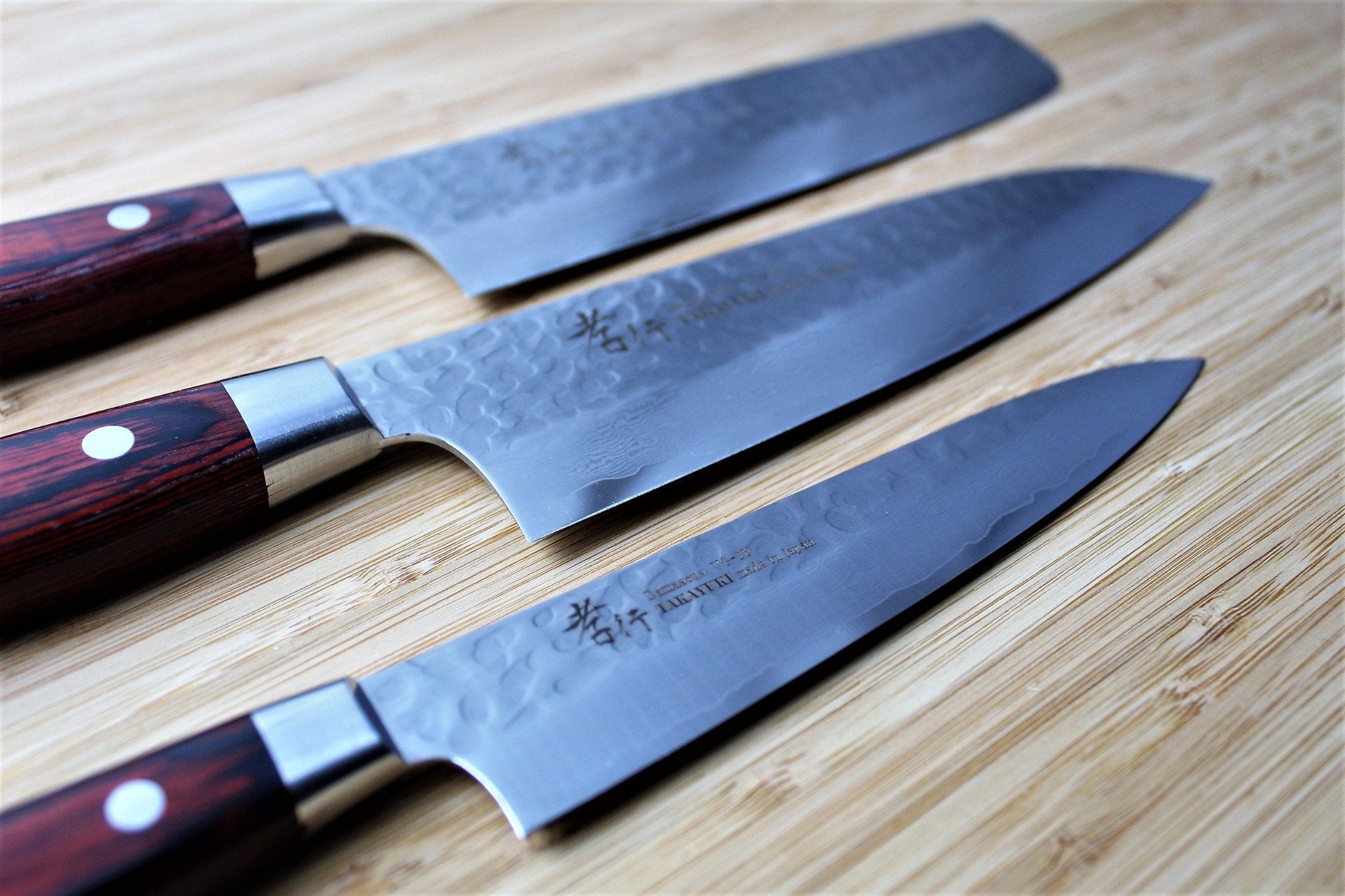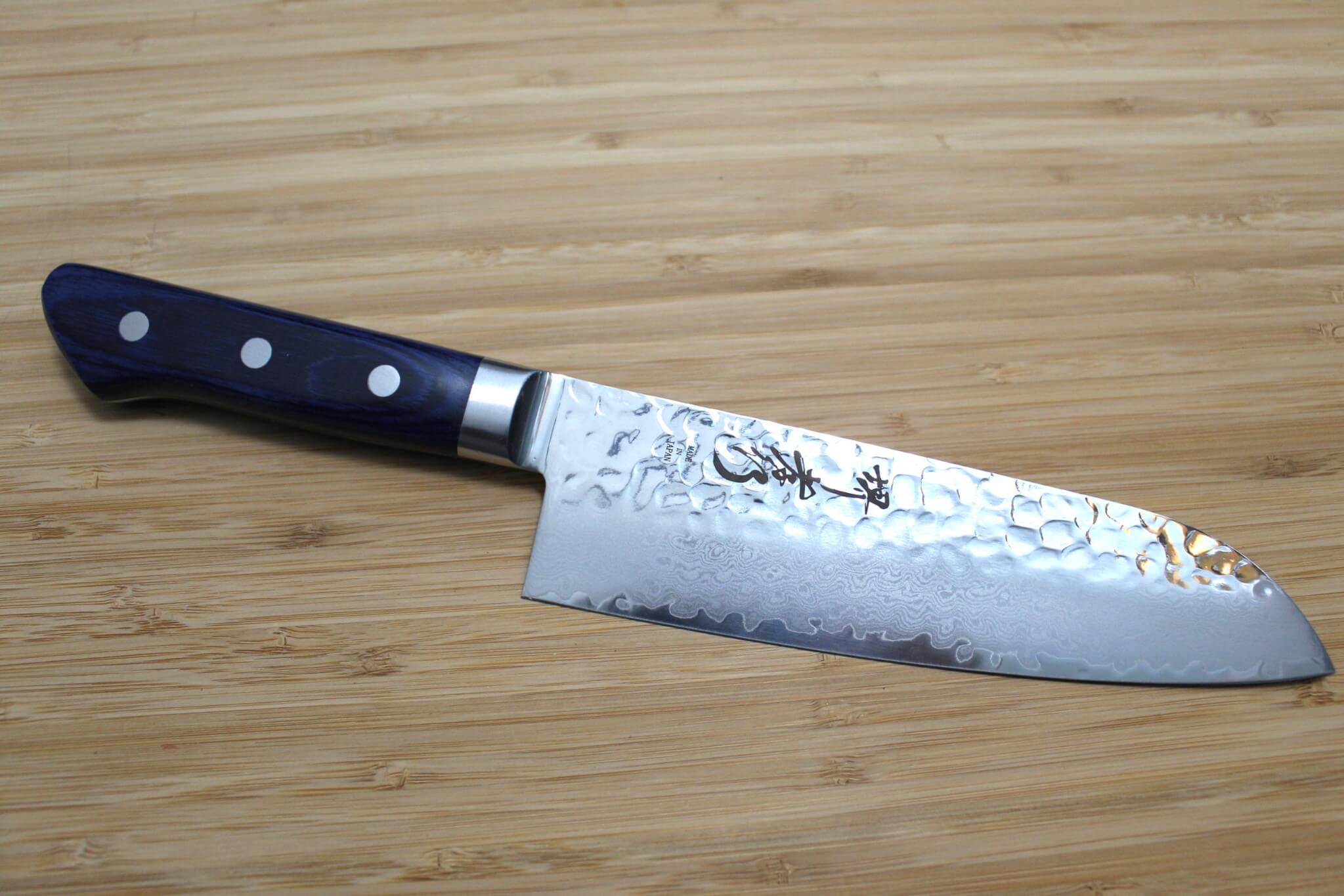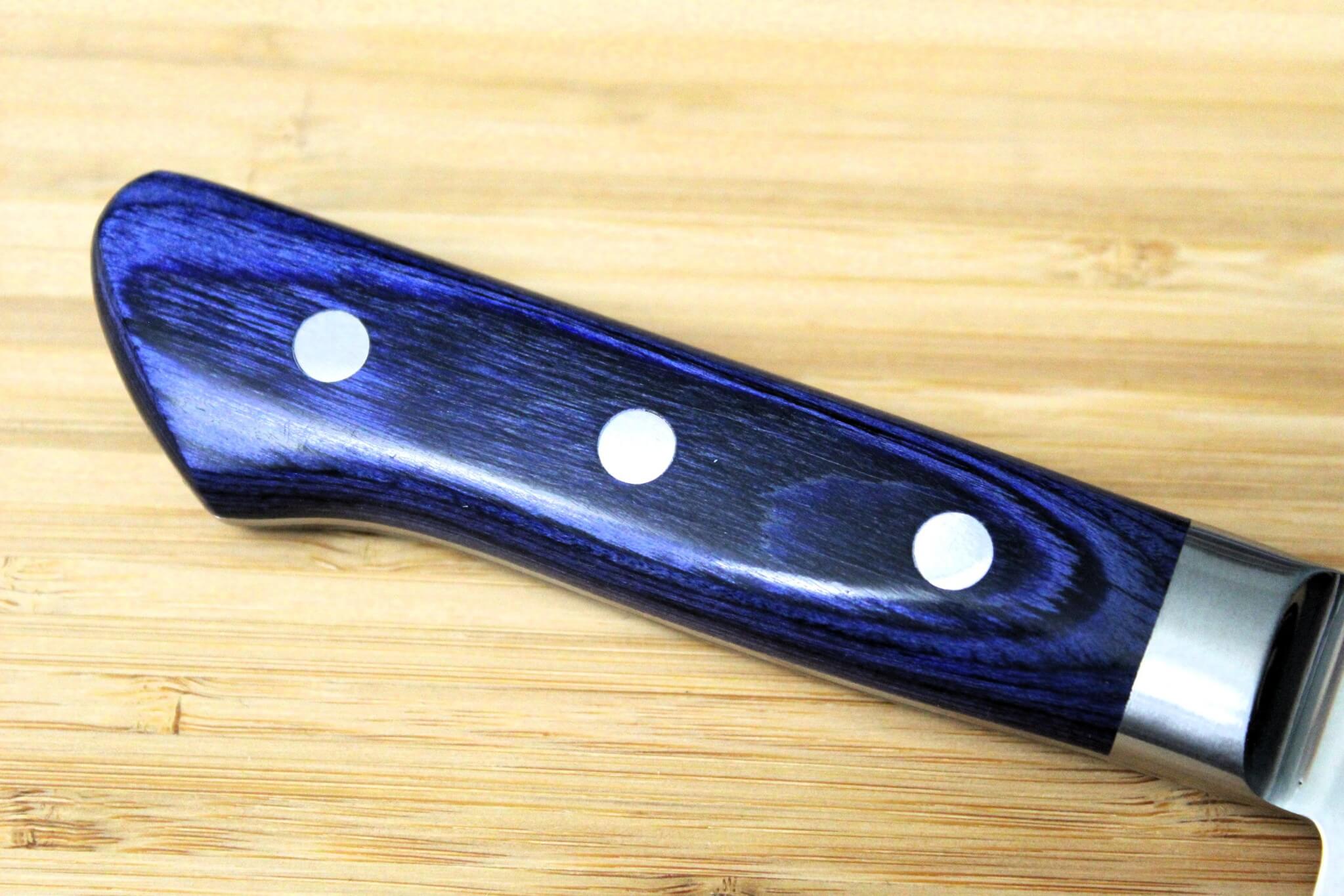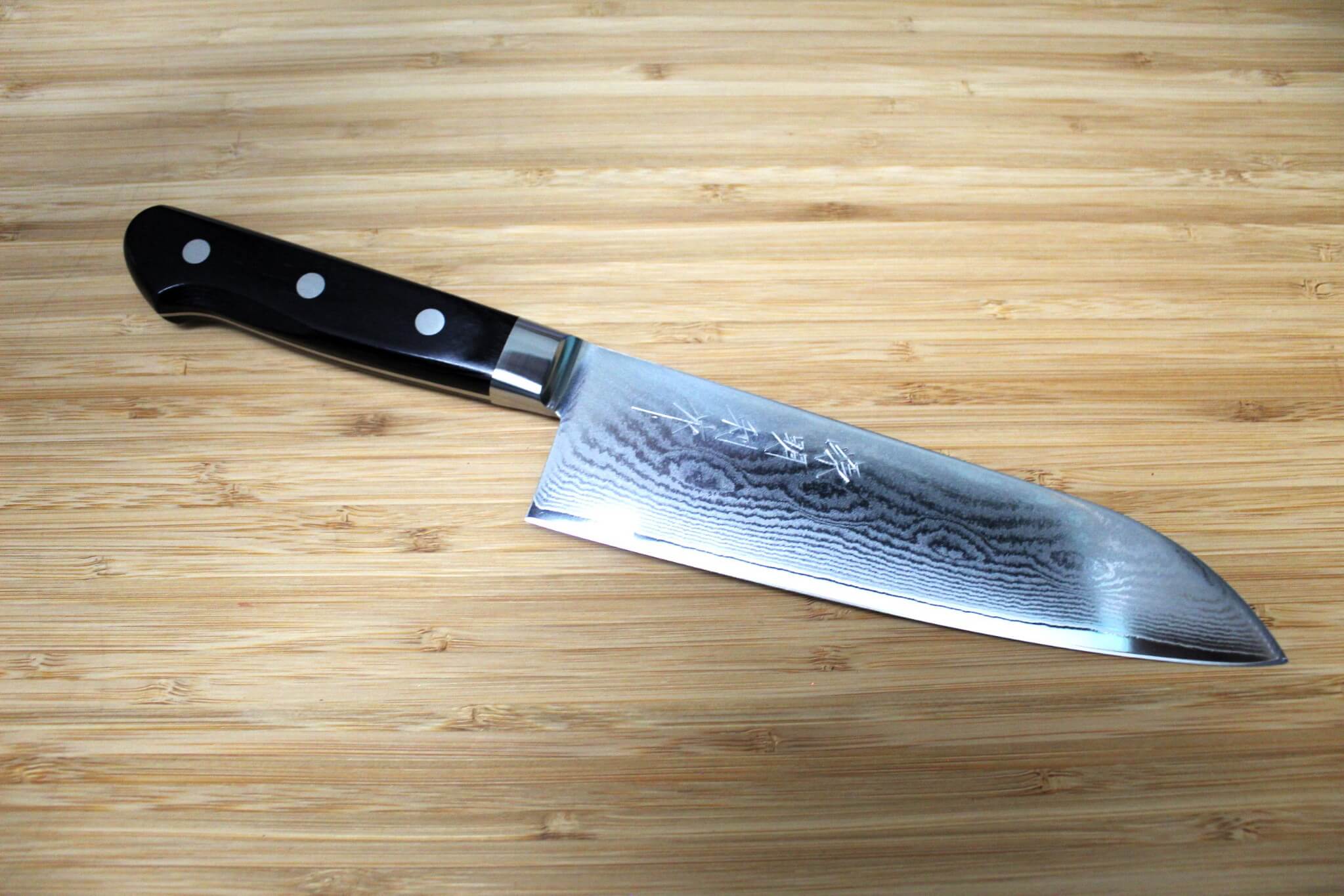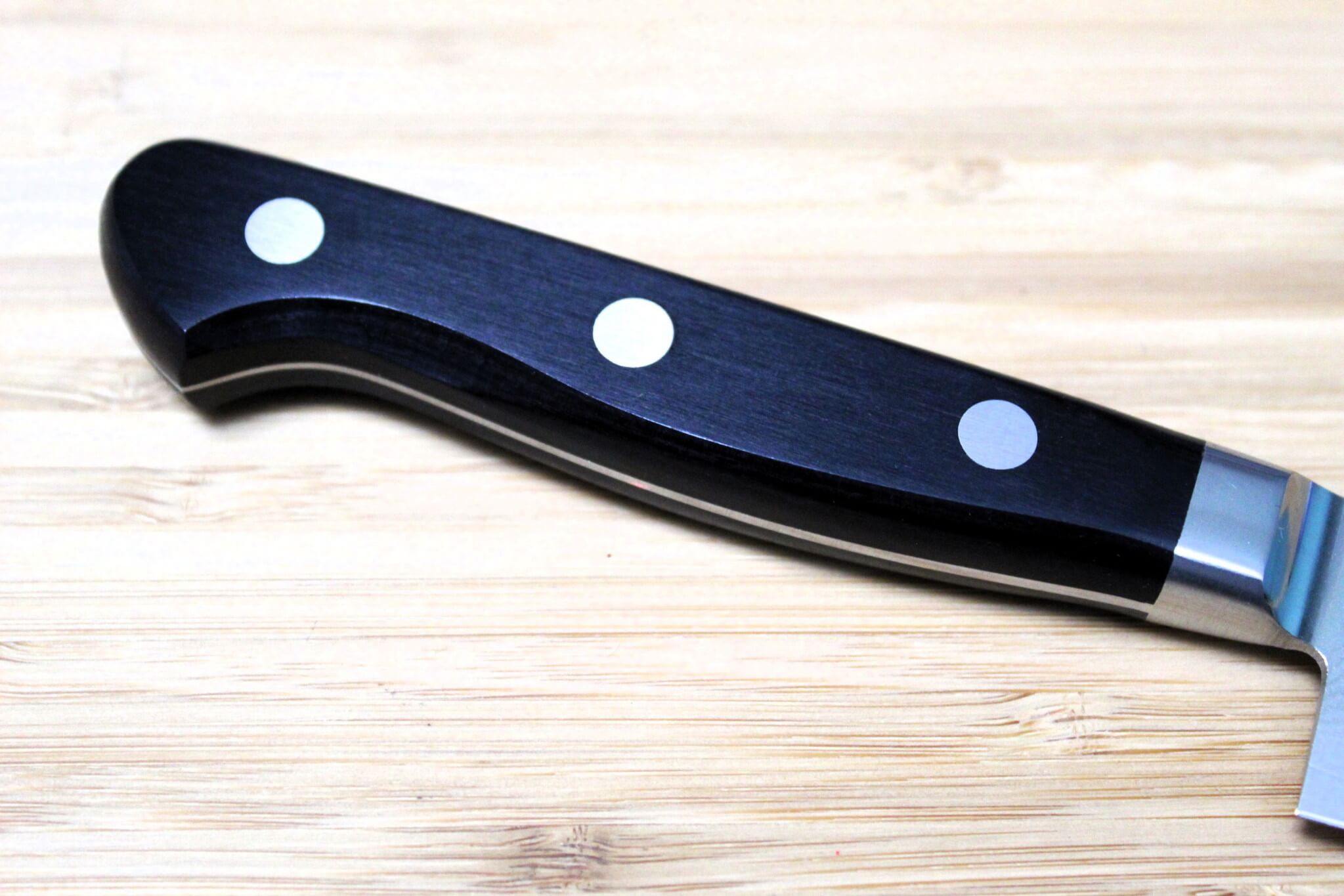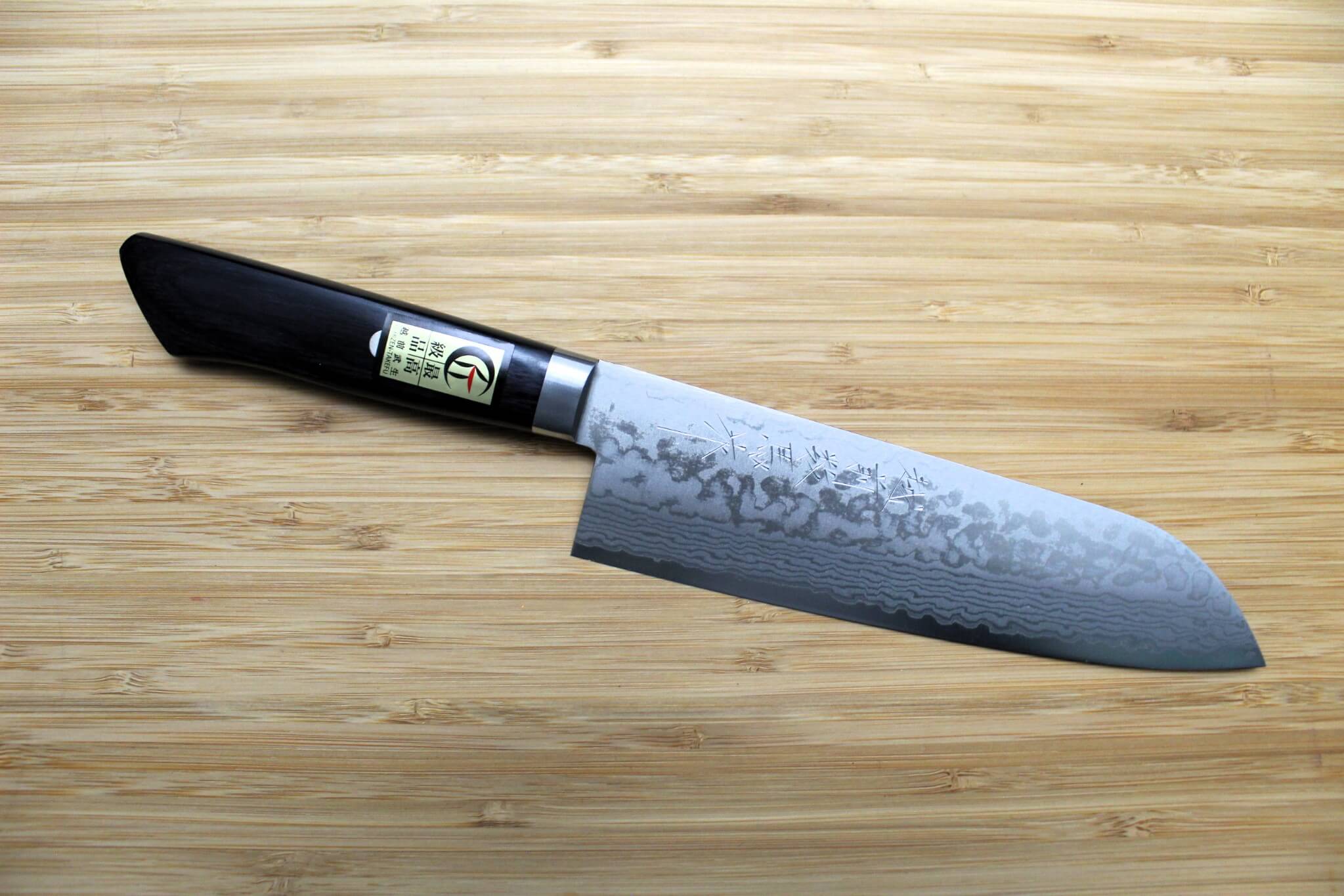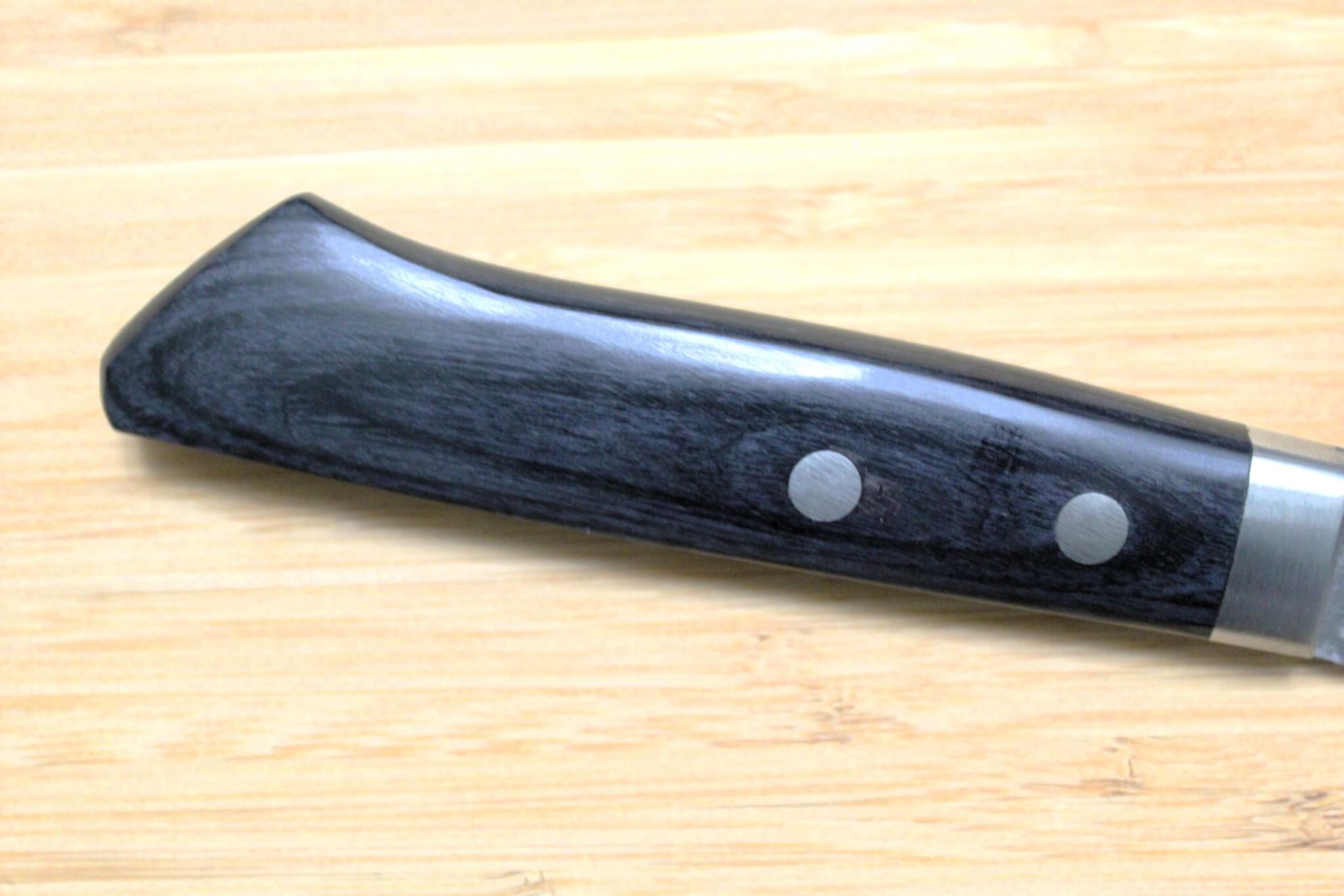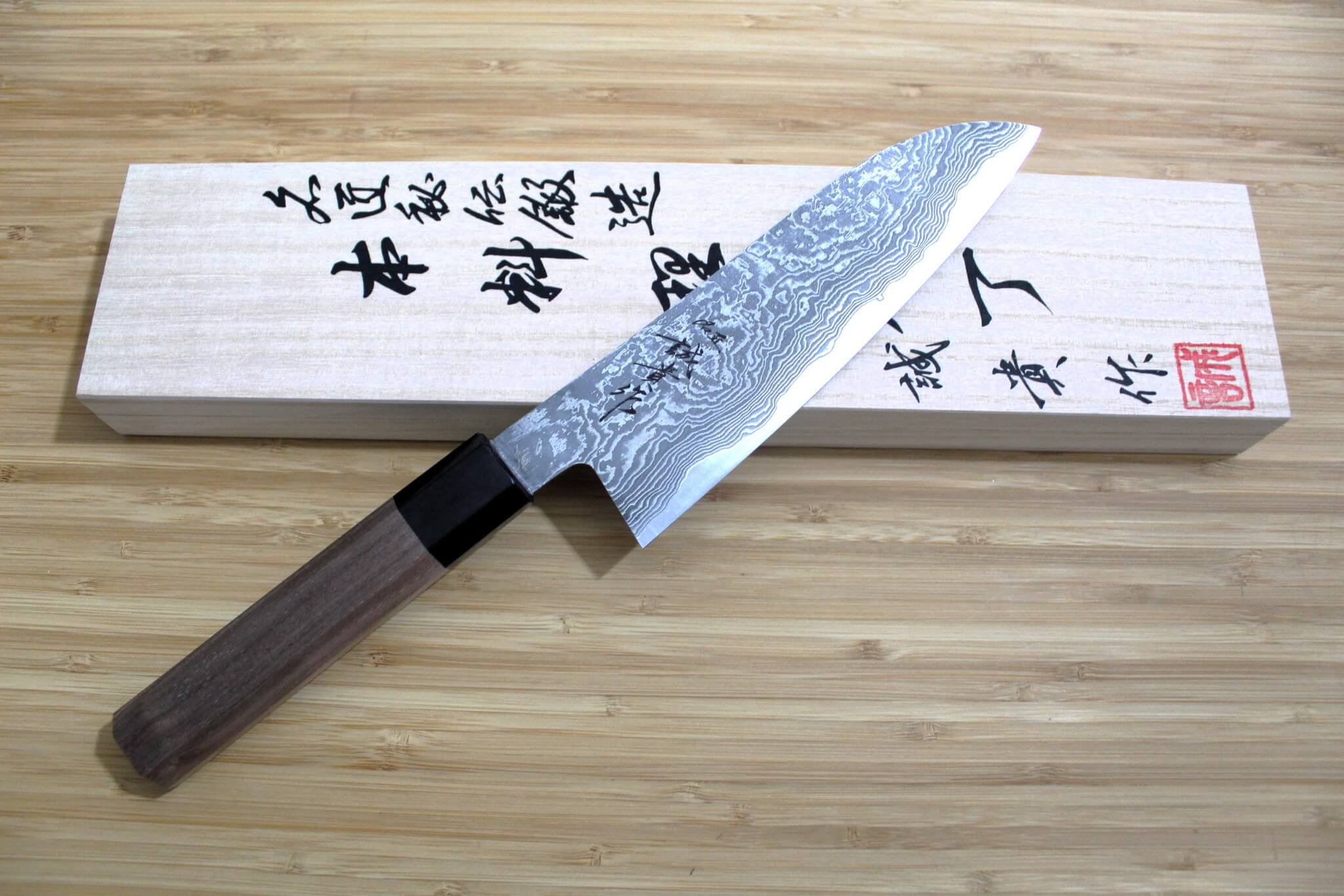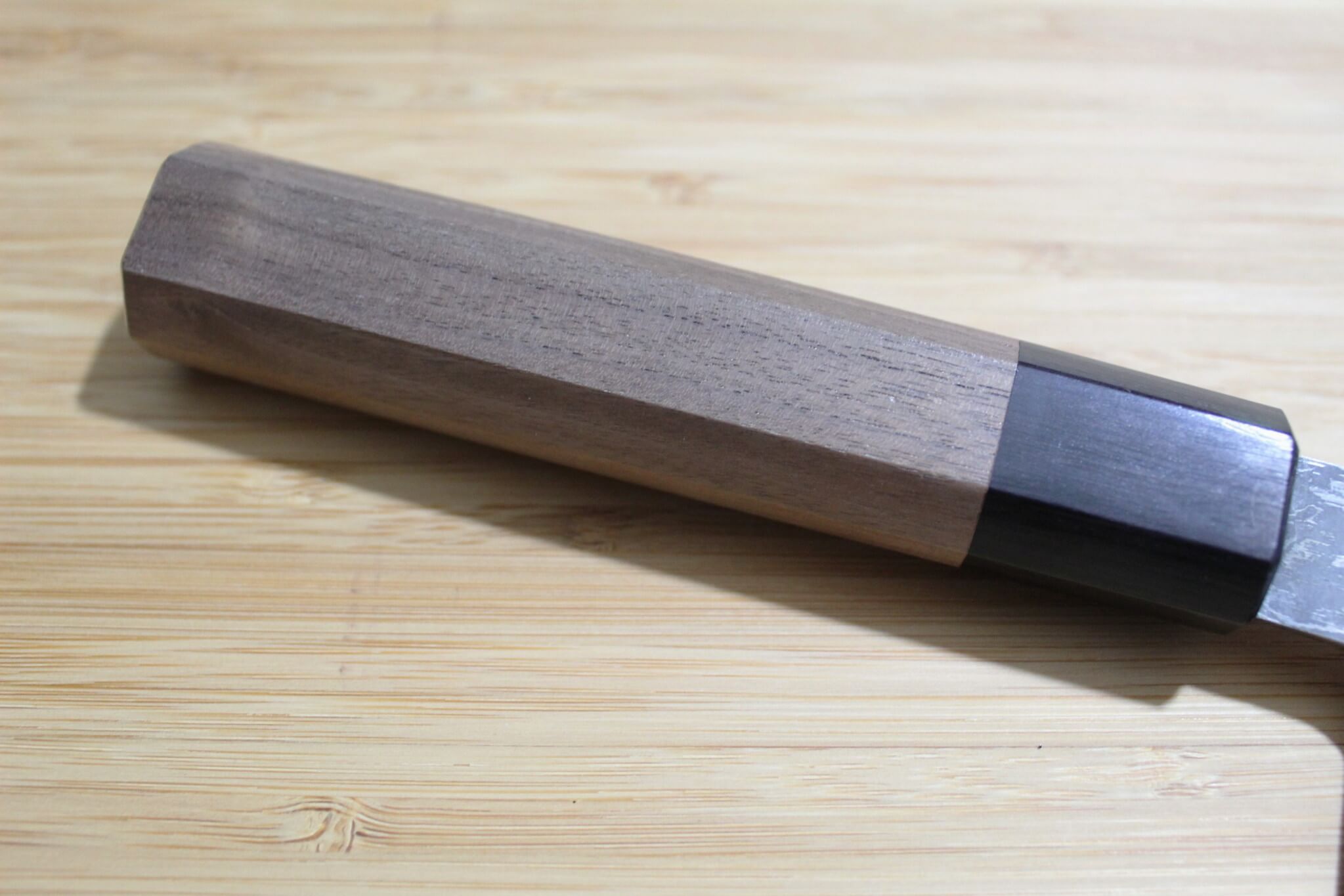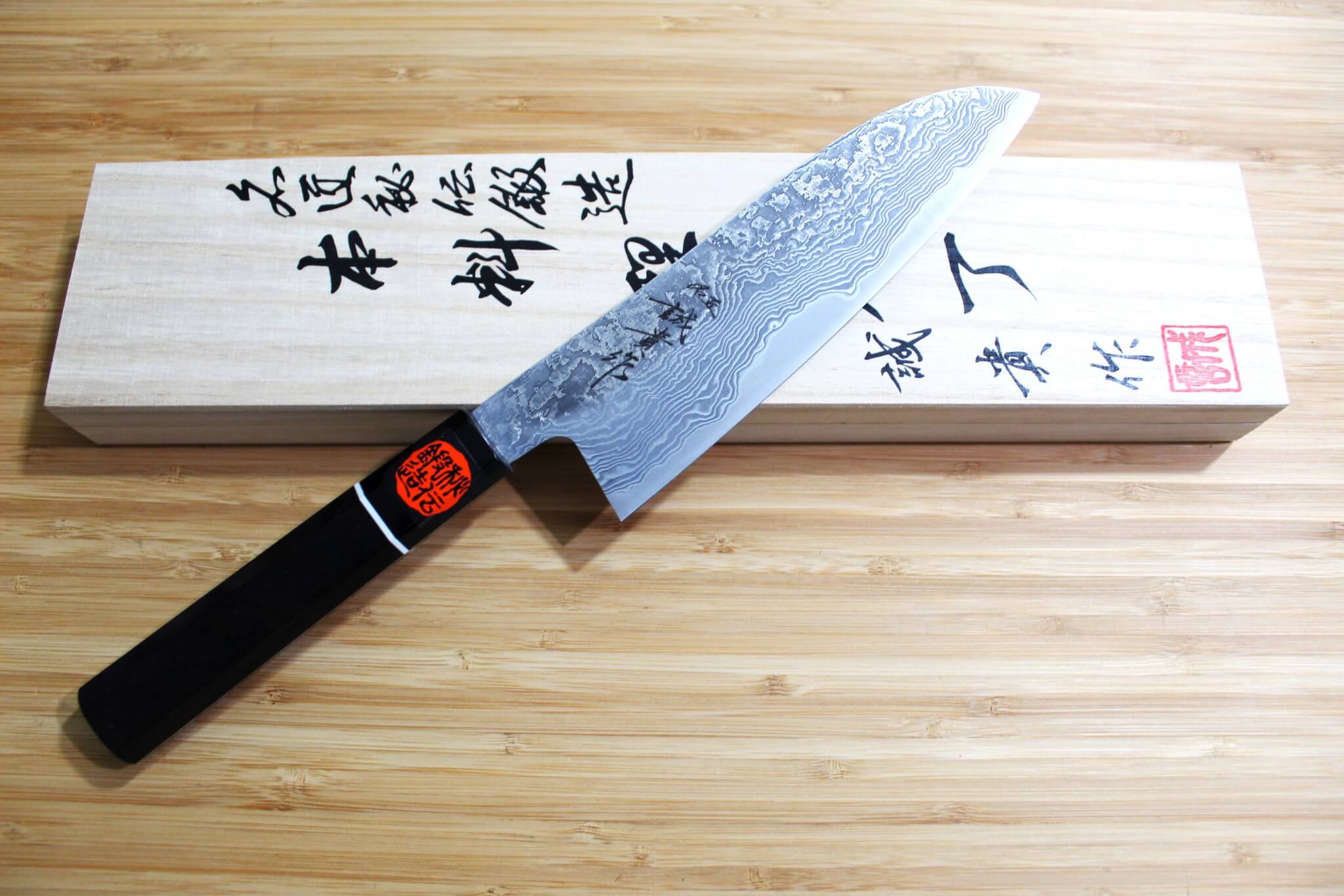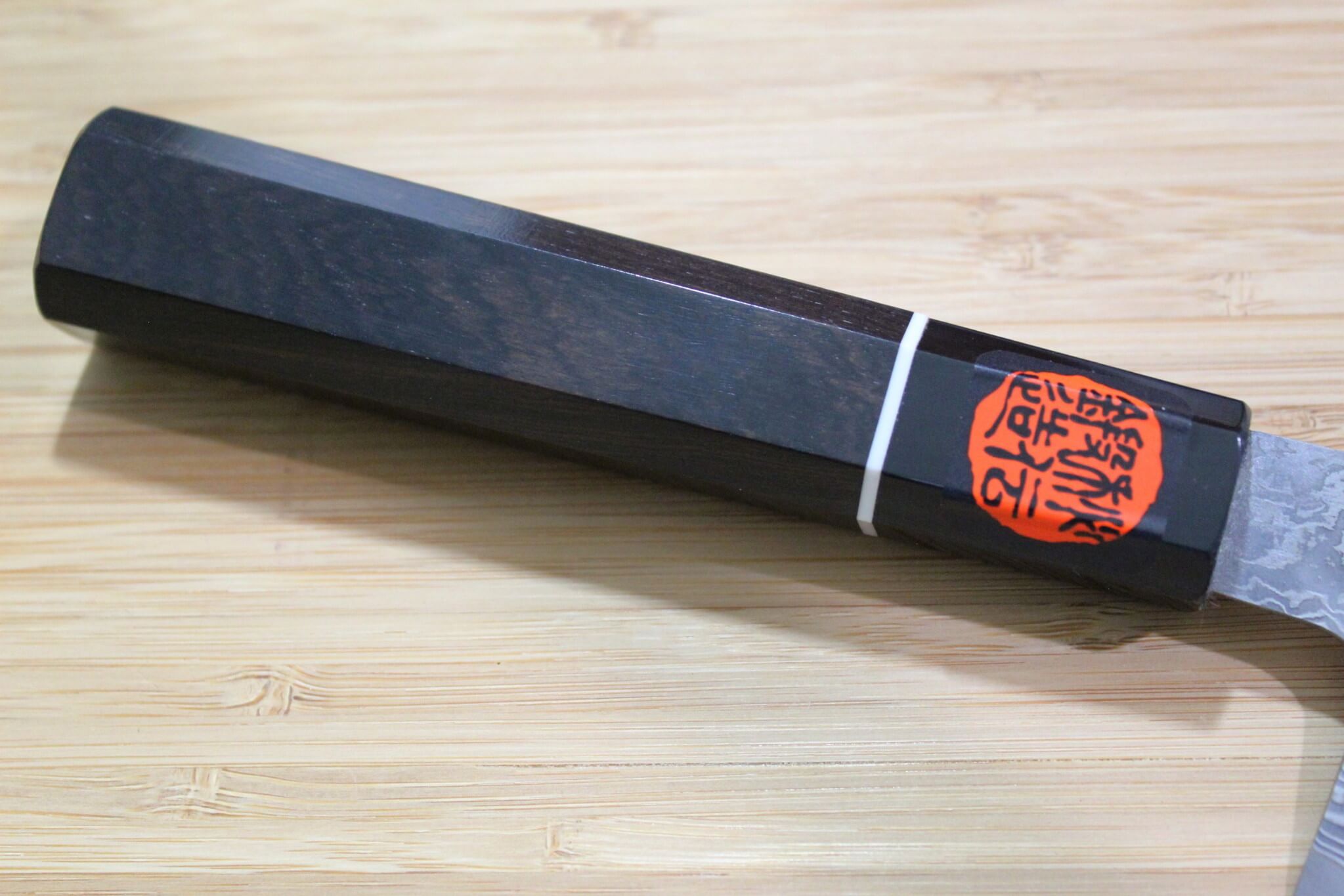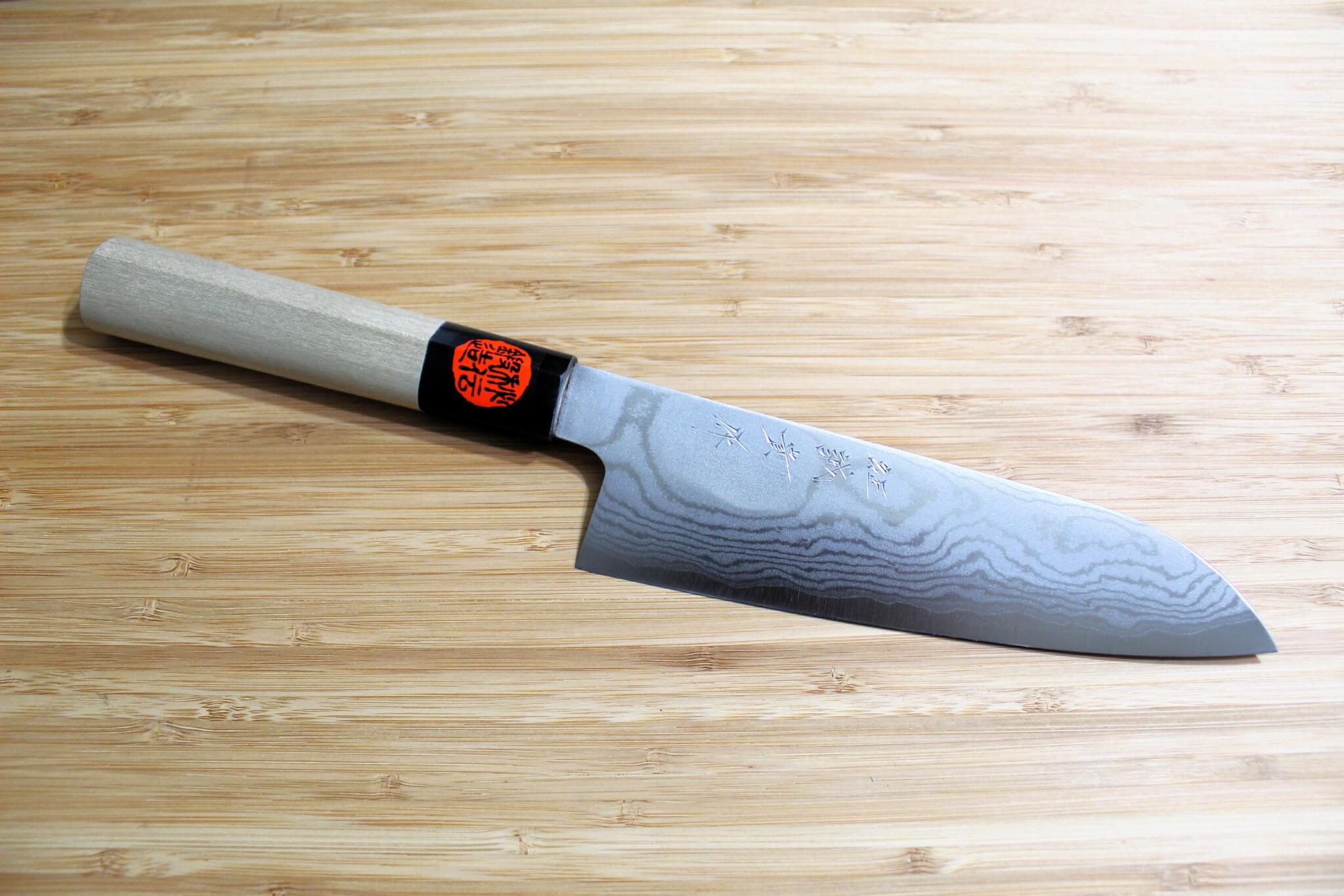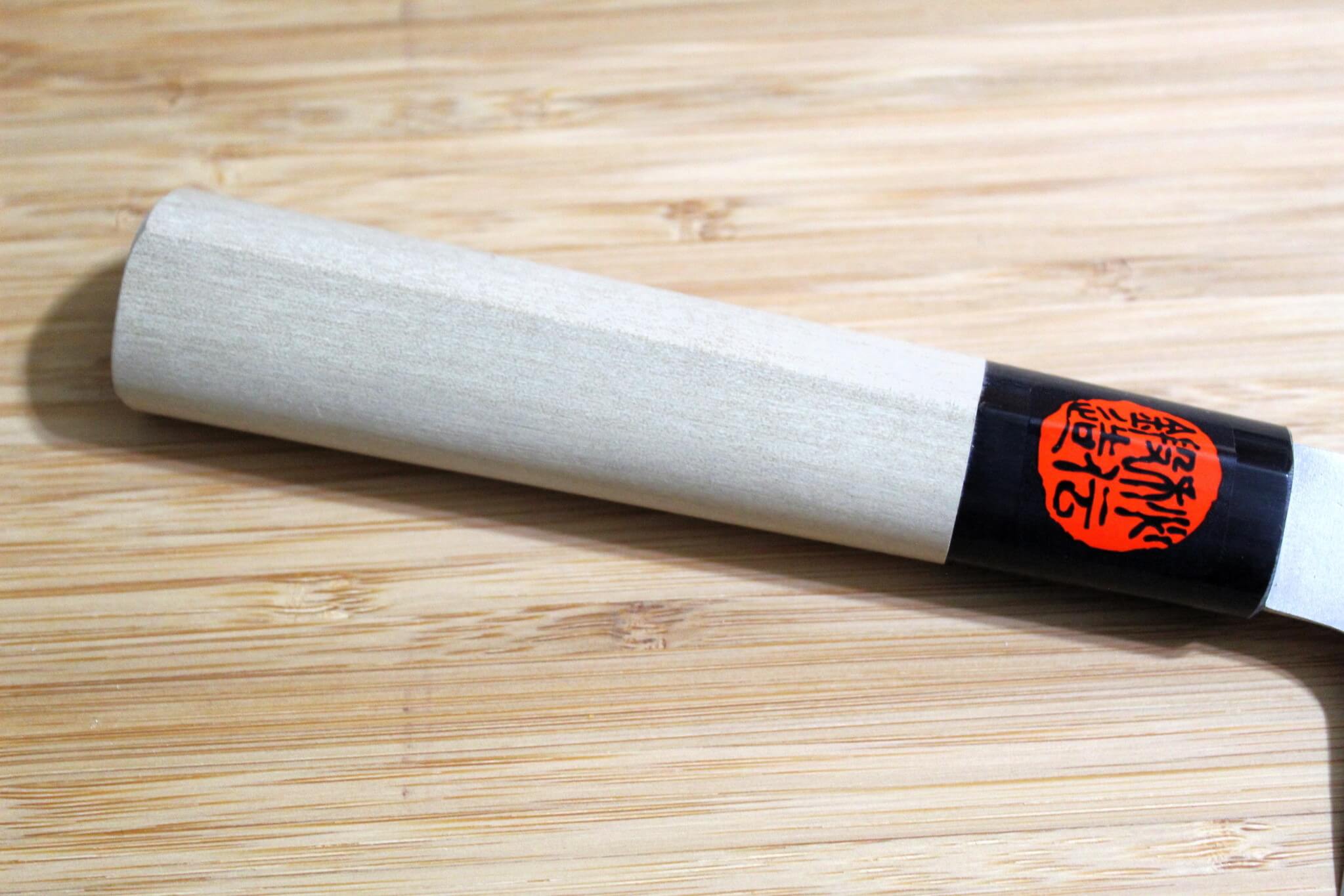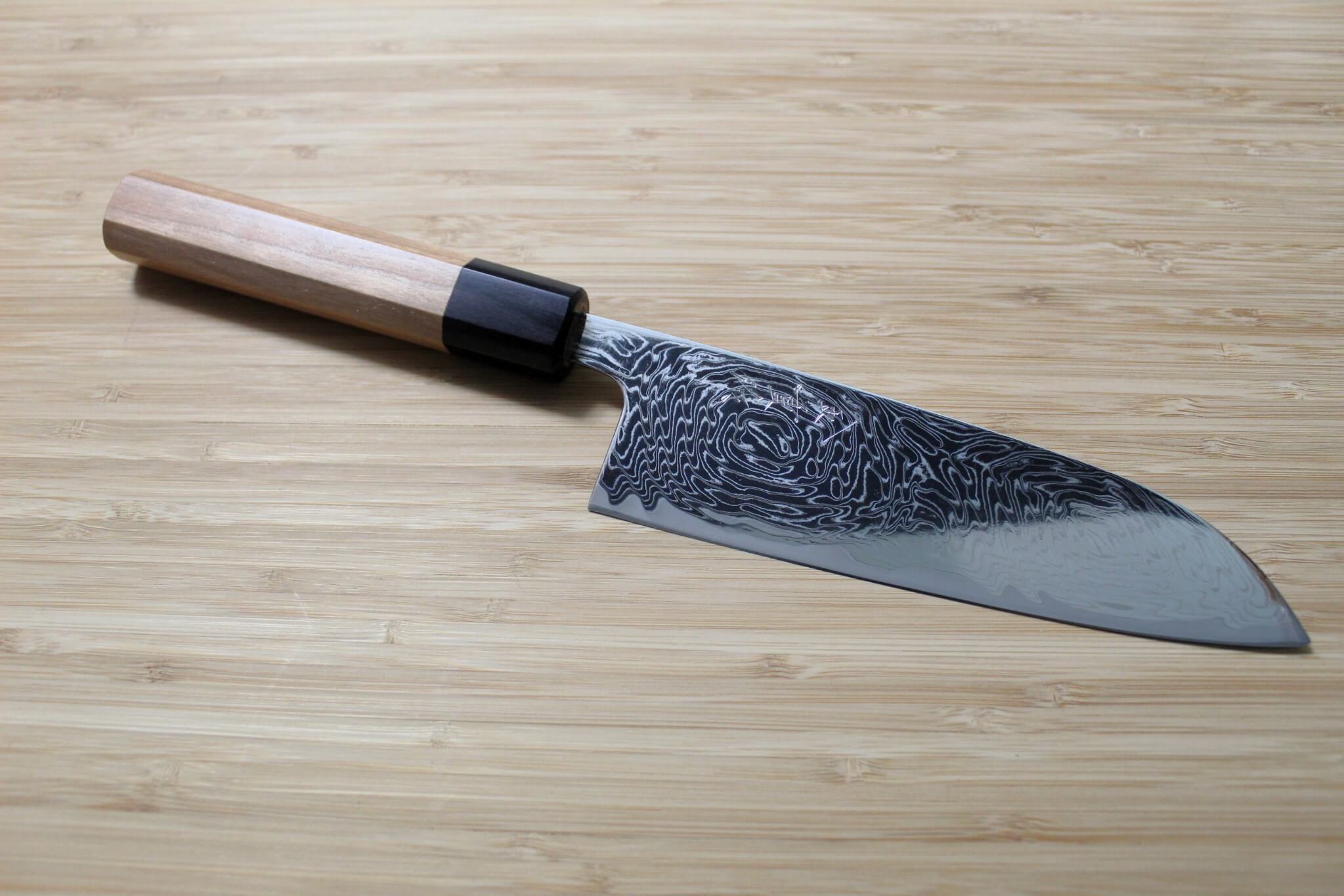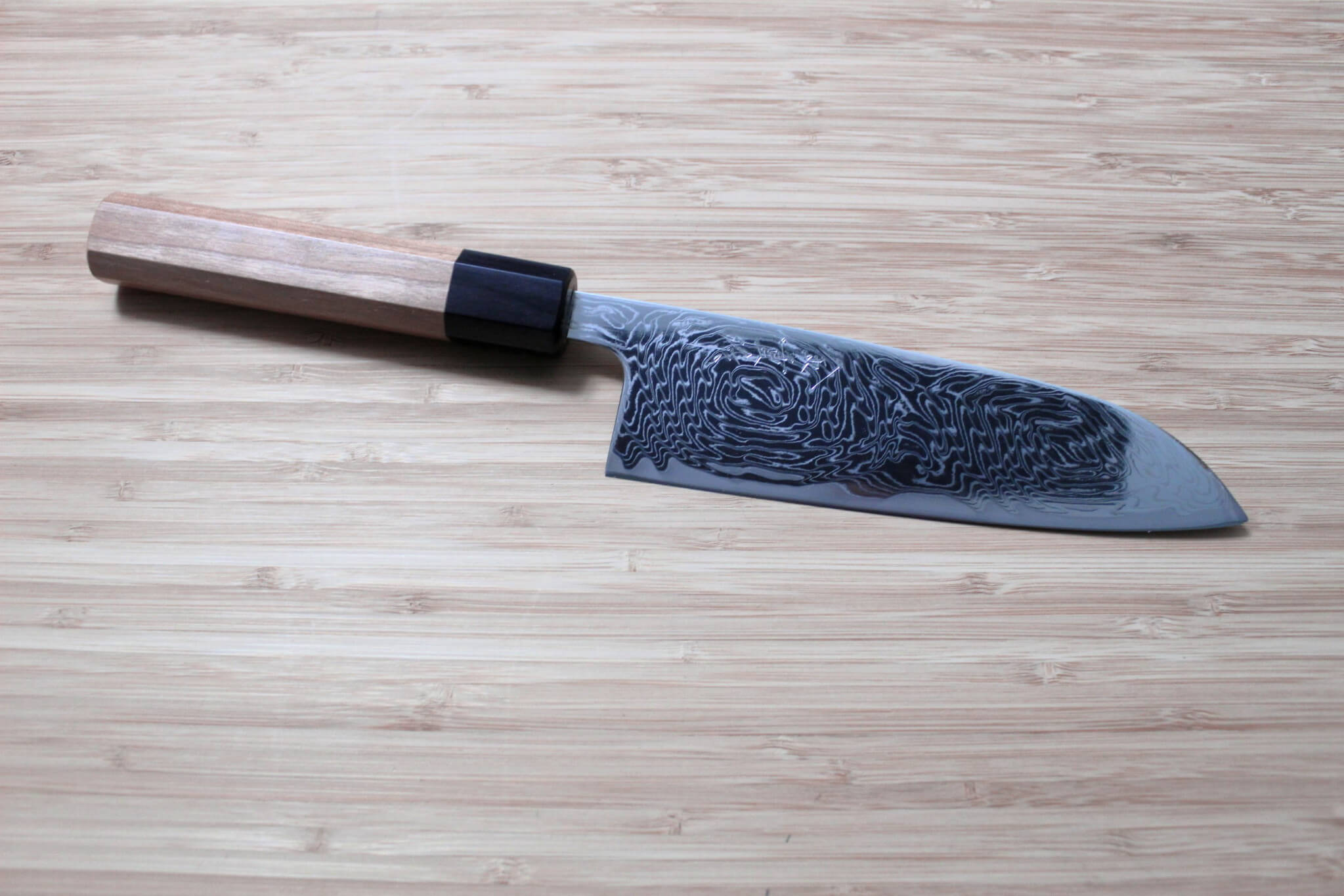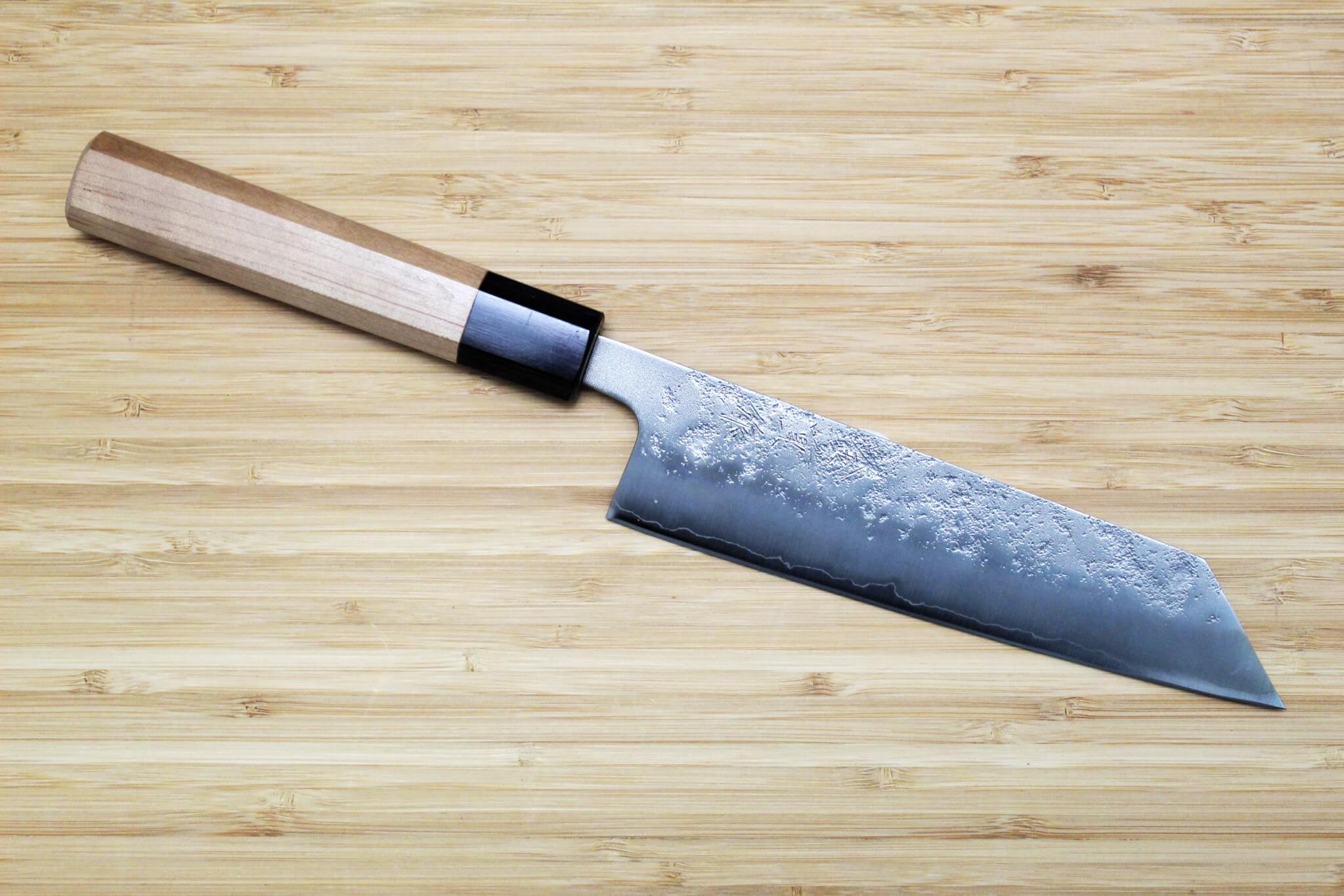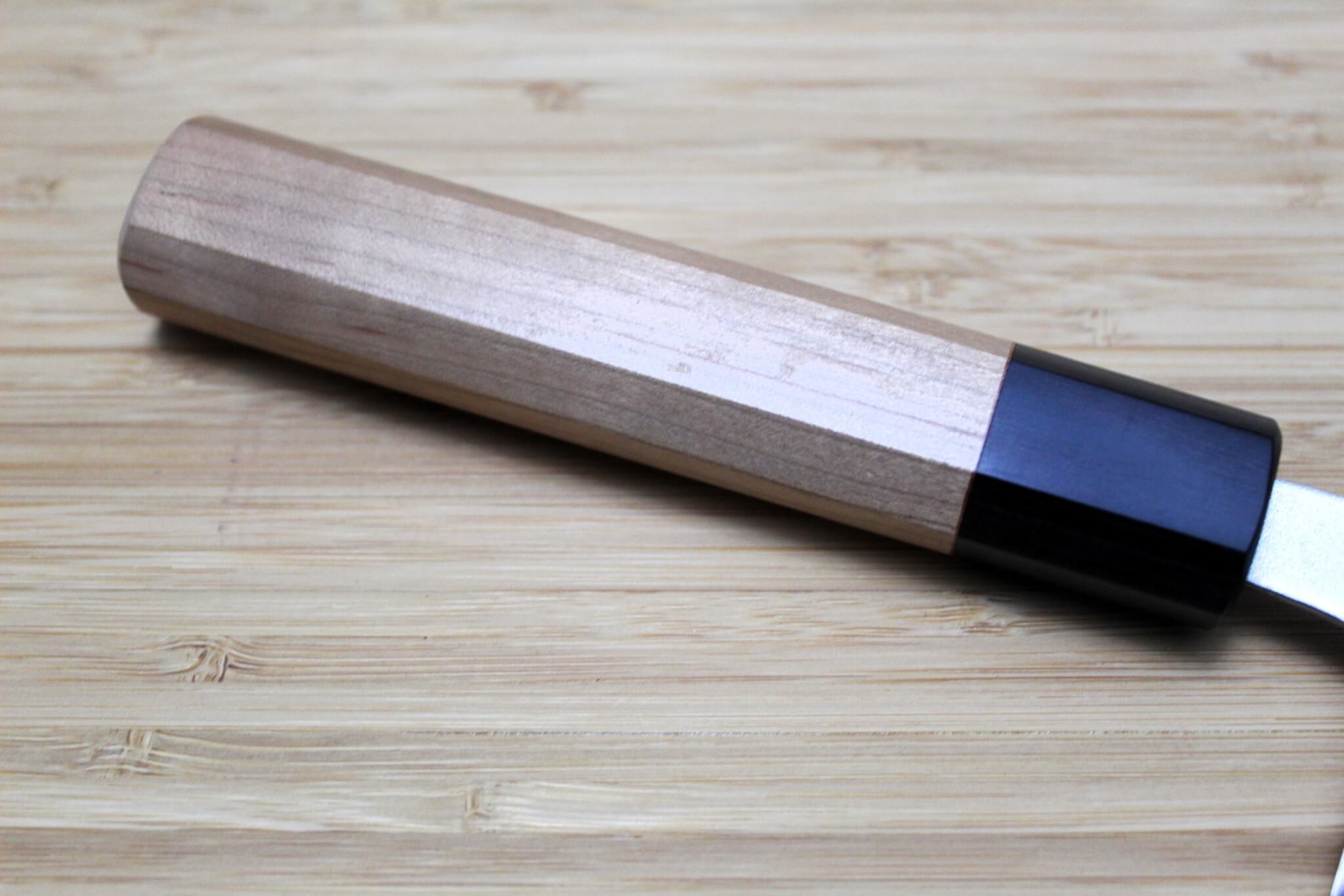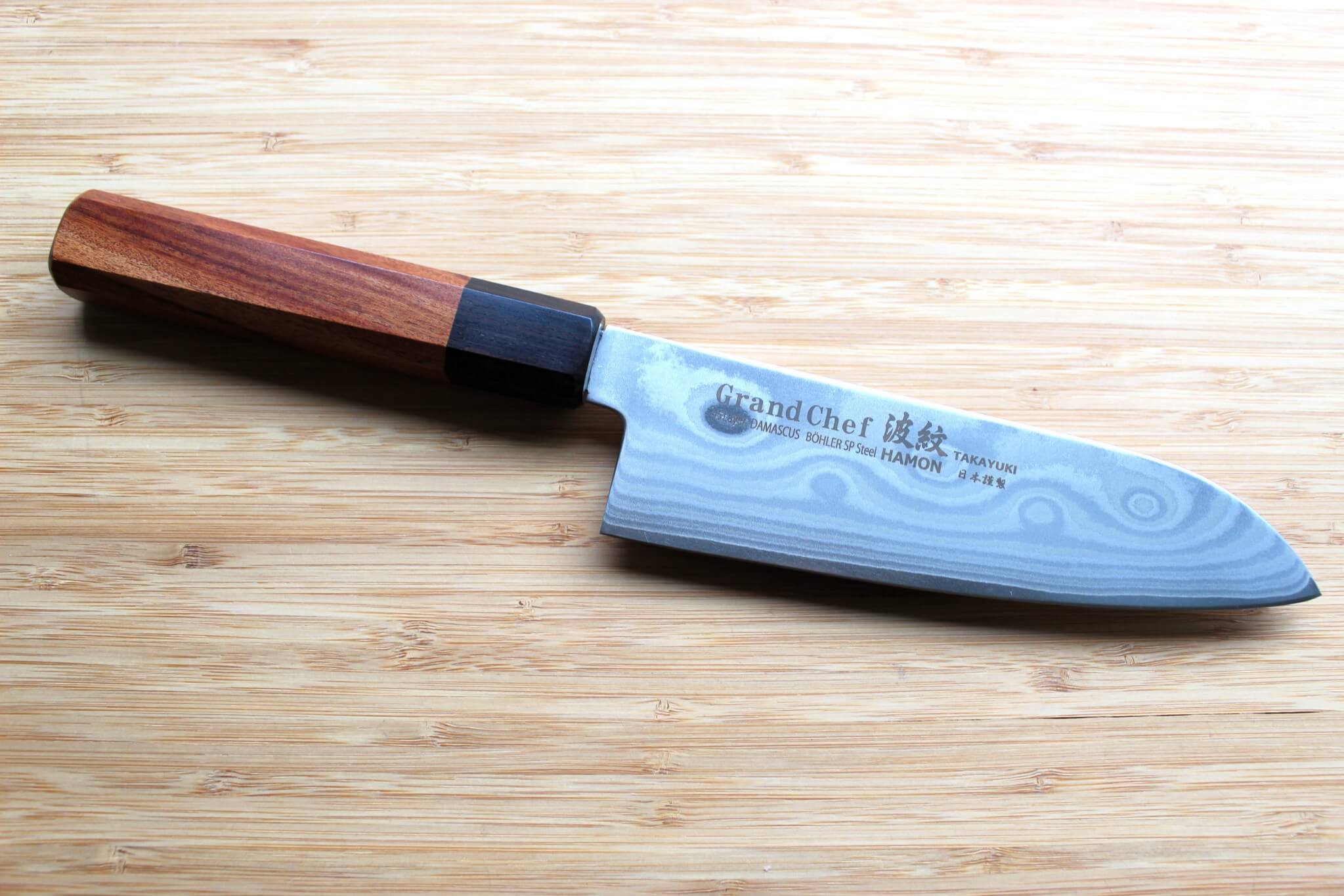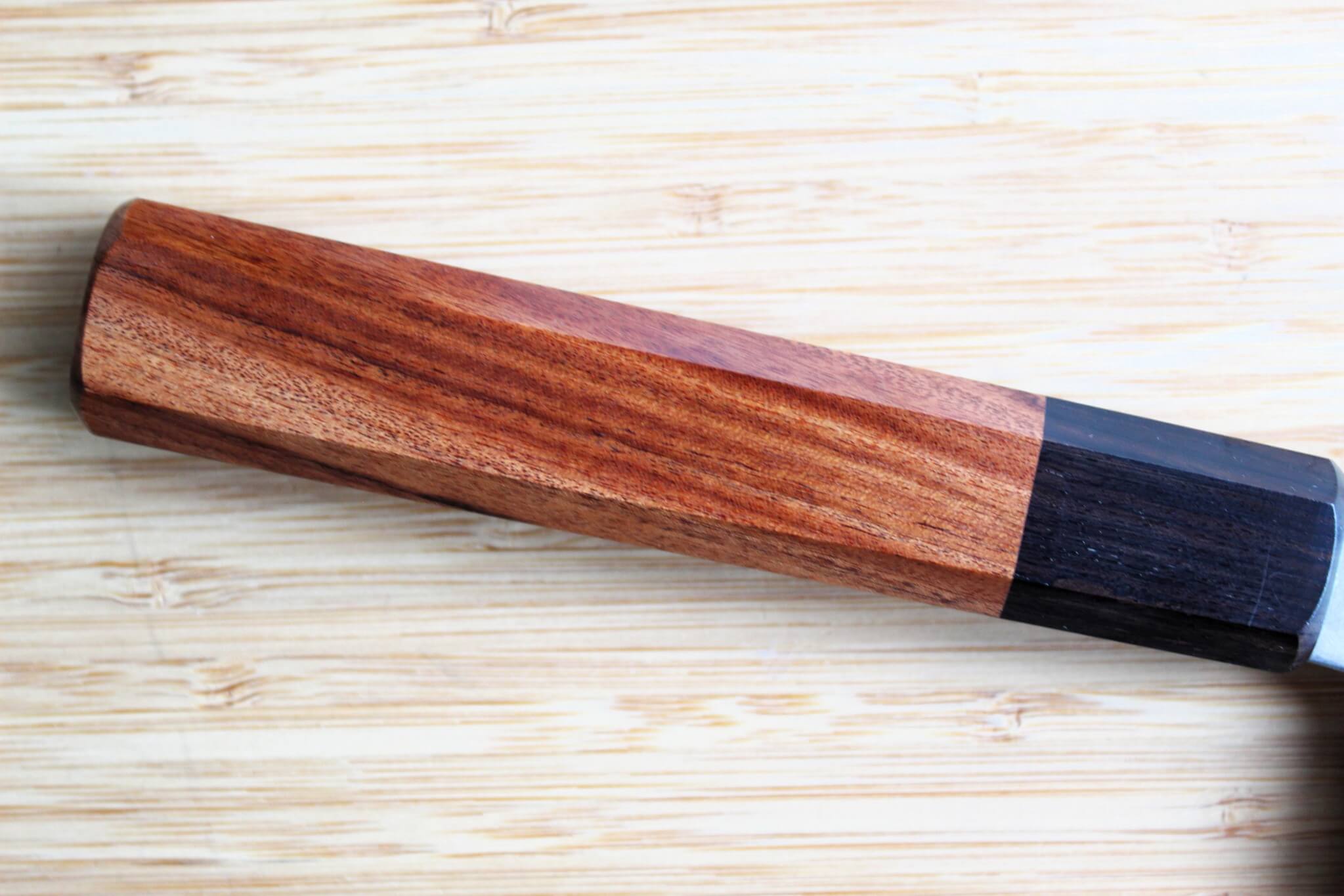Filters
WHAT ARE SANTOKU KNIVES USED FOR?
Slicing
These knives are flatter than the typical Japanese kitchen knives and have a small upward curve near the tip, which makes slicing smoother. As Japanese knives tend to be more slender than German knives, they make slicing through items extremely easy. When using the Santoku knife effectively for slicing, you use a pulling or pushing motion which should be more of a backward or forward motion, than a downward one. This uses the design of the blade to do the hard work. This technique allows you to create thin, crisp slices.
Dicing
The Santoku chef knife excels at precision cuts like dicing, thanks to their small, easily controllable blade size. The blade length is typically between 160mm to 180mm (or 6-7”) with an edge angle of 20-30 degrees which gives them the ability to dice more precisely than other knives.
When looking for the right dicing and mincing tool, you can never go wrong with a Japanese Santoku knife.
Chopping
The sharpness of the Santoku blade enables it to cut through foods quickly while its flatness allows for uniform dicing.
When you’re chopping with the Santoku, cut through ingredients with quick, intentional pushes rather than a back-and-forth roll. Since you don’t need to focus too much on precision and uniformity with this knife, you can work faster.
FEATURES OF SANTOKU KNIVES
Steel Blade
Santoku knives are made of stainless steel or high-carbon steel, making for a sharper, stronger, and more durable blade. They’re also sleek enough to complement the rest of the utensils in your kitchen.
Taller and Thinner Blade
The length and thinness of this knife allows more space for your knuckles so that you can cut directly above the cutting board. It also provides a good surface for the knuckles of your free hand to guide the blade during cutting and chopping.
Dimples on Blade
Often, a Santoku knife has a row of shallow dimples on the side of the blade. Also known as Kullenschliff or a Granton edge, these depressions reduce friction and prevent food from sticking to the blade.
Handle
As with many Japanese knives, with the Santoku, there is the option of a Western-style handle with a full tang as well as a more traditional Japanese handle with a partial tang. The Western handles are more ergonomic with the tang going the full length of the handle, while the Japanese style handle is either oval or octagonal with a tang that goes about two-thirds of the length of the handle. Either option makes for comfortable use for various hand sizes and cutting styles.
BUY JAPANESE SANTOKU KNIVES ONLINE WITH HASU-SEIZO
Santoku knives have a fine cutting form, making repetitive chopping, dicing, and slicing easier and less tiring. If you’re looking for a sharp, strong, and functional knife to add to your knife collection, you’ll be hard-pressed to do better than the Santoku.
At Hasu-Seizo, we stock an extensive range of Santoku knives, as well as other Japanese blades, including Gyuto, Shobu, Takohiki, Yanagiba, Sujihiki and more. Find quality craftsmanship at reasonable prices on Hasu-Seizo.
WHAT ARE SANTOKU KNIVES USED FOR?
Slicing
These knives are flatter than the typical Japanese kitchen knives and have a small upward curve near the tip, which makes slicing smoother. As Japanese knives tend to be more slender than German knives, they make slicing through items extremely easy. When using the Santoku knife effectively for slicing, you use a pulling or pushing motion which should be more of a backward or forward motion, than a downward one. This uses the design of the blade to do the hard work. This technique allows you to create thin, crisp slices.
Dicing
The Santoku chef knife excels at precision cuts like dicing, thanks to their small, easily controllable blade size. The blade length is typically between 160mm to 180mm (or 6-7”) with an. . . Show More >

